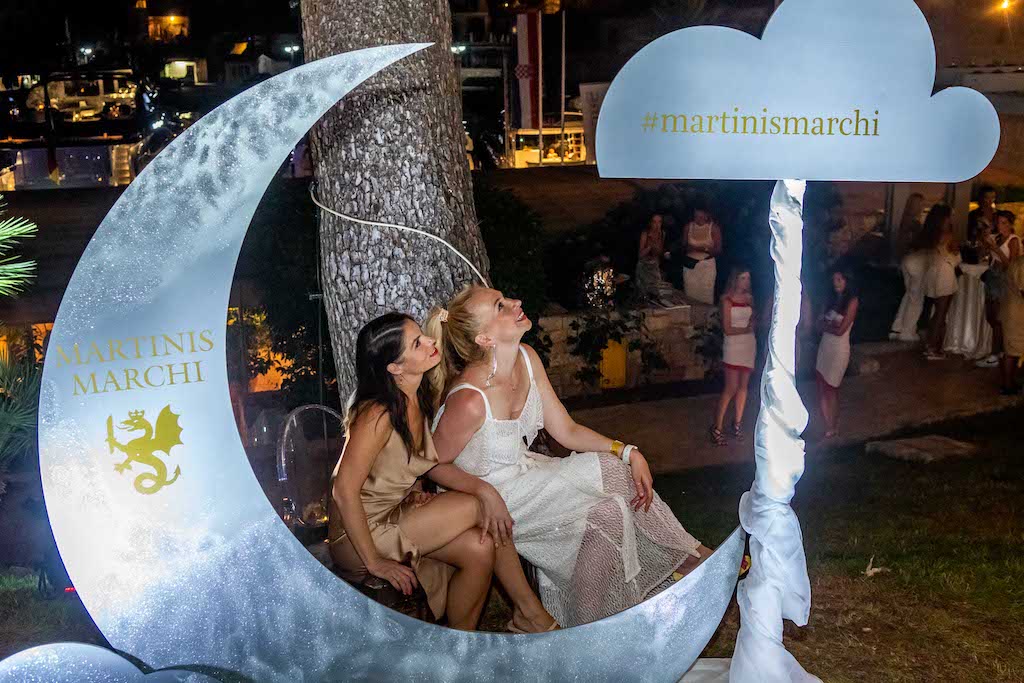Over 700 Kilos of Waste Removed From Beaches and Seabed Around Šolta
ZAGREB, 12 April 2022 - Participants in a "green" regatta on Monday removed abandoned waste from beaches and the seabed around the island of Šolta.
During the cleanup, over 700 kilos of waste was collected and most of it was plastic, which poses the biggest threat to marine life.
The "Cleaning Sailing Race Regatta", held on that Adriatic island off Split, included 12 divers who removed the waste from the seabed.
The partners in this campaign are the Split-based Sunce association and the Biotherm cosmetics and healthcare items brand.
Gabrijela Medunić Orlić, the executive director of the Sunce association, said that nowadays, public beaches are kept in good shape by local utility companies, however, other beaches are often full of litter and the utilities do not have enough workers to clean them up.
Accommodation Provided for 80 Ukrainian Refugees on Šolta Island
March 7, 2022 - Eighty Ukrainian refugees on Šolta Island will receive temporary accommodation in Maslinica and Gornje Selo.
Šolta locals can be proud, as they quickly organized and in just 24 hours provided temporary accommodation on the island for 80 Ukrainian refugees, reports Slobodna Dalmacija.
"It is mostly about children, women, and the elderly, and the youngest refugee who arrived is a baby of only three months. It all started with the Ukrainian Vadym Beskid, a lover of Šolta, especially Maslinica, where he spends his summers, and the Zagreb resident Vera Vidoni who collected aid in her apartment. When the state of war in Ukraine broke out, Vadym's family asked for help, but as more and more people fled, the number spread, and no one could be turned away, so instead of 40, 80 Ukrainians found safety from the war on Šolta. They passed several hundred kilometers and six countries from Ukraine to Šolta," said Ivana Mihanović, one of the organizers.
The people of Šolta reacted quickly, so all the necessities have been provided for now, but support will be needed in the coming months. The war tragedies they experienced on the way to Croatia are terrible.
"One mother came in a small car with six children; she was very shaken because the convoy with which she was leaving the country was shelled and in their immediate vicinity. All the mothers who came to us are very young, and the oldest child is 12 years old. The medical service is coming to us on Monday because of the coronavirus, but I must emphasize that everyone is very grateful and disciplined. Everyone helped us, from individuals, companies, to the Polish community in Zagreb," Ivana adds.
Jadrolinija also provided free transportation for all refugees to Šolta.
"They are located in four houses in Maslinica and Gornje Selo. Today the local fishers will prepare lunch for them; I hope the children will be satisfied. Three parishes are involved in the action: the Parish of Our Lady of Lourdes from Zagreb, St. Roch from Split, and the Parish of St. Stephen the First Martyr from Grohote. Numerous companies also contributed: Konzum, Ribola, Promet Makarska, Imex Banka, Ljekarne Split-Dalmatia, Lola Ribar, restaurant Mlin, Pablo pharmacies, and JGL with the coordination of the Red Cross and director Tomislav Goja.
All who donate to the Red Cross "for refugees on Šolta" can be sure they will receive the aid.
If you want to help, donations are accepted at:
Župa sv. Stjepana Prvomučenika
Igrališće 22
21430 Grohote, otok Šolta
IBAN:
HR1524070001100619207
Payment description required: Za pomoć izbjeglicama iz Ukrajine.
For more, check out our lifestyle section.
New 5-star Maslinica Tourist Resort on Šolta to Make Island Even More Desirable
February 6, 2022 - The new Maslinica tourist resort on Šolta will have about 300 beds in five-star villas and bungalows, and a marina with a breakwater above Šipkova Bay.
A new tourist resort has begun to emerge near Maslinica on Šolta, thanks to which the island, where the majority of accommodation is in private houses, should become an even more desirable destination. And more importantly, new jobs will be created, reports HRT.
A Maslinica bypass and the access road to the first tourist settlement on Šolta are being built above Šipkova Bay. Road works will be completed in March, followed by the procedure for the construction of facilities, i.e., obtaining building permits and preparing documentation.
The mayor of Šolta, Nikola Cecić Karuzić, said that Šolta lacks accommodation capacities and that the new tourist resort is a big investment. He added that one entrepreneur from Germany had arranged the marina and wanted to continue investing.
Given the constant growth in the number of tourists, which was not interrupted even during the pandemic, a new resort is needed in Šolta.
The director of the Šolta Tourist Board, Zorana Kaštelanac, emphasized that reservations for apartments were mainly filled and that they were extremely pleased.
"That gives us good optimism for the new season," she added.
In addition to improving road infrastructure and constructing new tourist facilities, with the constant increase in the number of beds in private accommodation, Šolta also considers the accompanying service and trade facilities. Cecić Karuzić pointed out that this project will create new jobs.
The project in Šipkova Bay is worth a little over forty million euros. The resort will have about three hundred beds in five-star villas and bungalows and a marina with a breakwater. It should also be open all year round, employing around 180 people.
For more on travel in Croatia, follow TCN's dedicated page.
A Croatian First: Šolta-Brač Underwater Tunnel Planned, Valued at EUR 50 million
January 19, 2022 - It has taken seven years for the Šolta-Brač underwater tunnel project to get a more concrete status in the Split-Dalmatia County Spatial Plan.
The status change took place in the third amendment, adopted in December last year. As a result, the essential provision on considering the possibility of underwater connections between the two central Dalmatian islands was replaced by classifying the project in the network of state roads to be built, Slobodna Dalmacija writes.
According to the plan, on the Šolta side, the entrance to the tunnel would be in the Livka area, and on the Brač side at the Milna point. Connecting roads would, of course, lead to the entrance. It will be the first underwater tunnel in Croatia and cost around 50 million euros.
"The initiative for change came from us," emphasizes Nikola Cecić Karuzić, Mayor of Šolta, stating the reasons for which they were guided.
"The interest of Šolta is that by connecting with a large island, it would get the shortest access to the Brač Airport and thus connect with the whole world. In summer, we would have ferry lines all day, now during the season, we have six, and in winter, four, while Brač has at least twice as many.
There are also several high schools on Brač, so our children, who are still studying there primarily for occupations in the hospitality industry, could travel to classes every day by organized transport. But, of course, this would also affect the development of agriculture.
On Šolta, the inhabitants are mainly engaged in sheep farming as a hobby, and at the moment, there are 23,000 sheep on the neighboring shoal. They keep them for agriculture, they fence the olive groves, and the sheep sprout thorns," the leader of Šolta tirelessly enumerates and explains:
"It would also have a positive impact on tourism. If there are up to 100,000 tourists on Brač in the summer, imagine what percentage would come to us, the flow of people and goods, how many activities could take place. These are all advantages of connecting with an island that is more developed than us."
Cecić Karuzić also notes that talks on this project have already been held in the competent ministries and announced the imminent start of obtaining documentation.
The financial side would be solved almost entirely with European Union funds, counting on a share from the treasury in Brussels of 85 or even 90 percent.
"We are interested in helping in preparing documentation and even financially as much as we can," says the Mayor of Šolta.
Šolta and Milna are, therefore, in agreement, but although the initiative to build the infrastructure facility is local, connecting the two islands is a state road, which means that the project will be under the jurisdiction of Hrvatske Ceste.
Until then, according to Zoran Botić, an expert advisor at the County Institute for Spatial Planning, inclusion in the Spatial Plan means that a corridor has been reserved so that the tunnel can be built. In any case, construction will be complex, demanding, and not cheap.
The Šolta-Brač underwater tunnel would be about 900 meters long, with 750 meters undersea since the entrances to the tunnel start on land.
"The width would be up to 18 meters with separate pedestrian and service corridors, and the internal height for vehicles at least five meters. It would be built of prefabricated pipes of individual lengths of 50 to 100 meters that would be laid in a planum made at the bottom. Part of it would be buried because the depth of the sea above the tunnel should be from 12 to 15 meters so that even the largest ships can sail unhindered."
The limitation of the longitudinal slope of tunnels should also be mentioned, for which the existing regulations should be corrected, i.e., harmonized with the world regulations for underwater tunnels. The higher longitudinal slope of the tunnel was once strictly limited due to the exhaust gases of vehicles, and today in this area, significant progress has been made in the construction of modern cars.
Indeed, tunnel ventilation remains a significant and unavoidable expense. The construction material must be high-strength concrete, waterproof, and resistant to the influence of salt. Croatian builders already have experience in the construction of large bridges and maritime structures.
Modern insulating materials in the form of various concrete admixtures and insulating coatings also enable significant savings," Botić said.
In assessing the value of the investment, he started by noting that the construction of an underwater tunnel is twice as expensive as that on land or by building a bridge:
"Based on the cost of building such projects in the world, this would cost between 40 and 50 million euros."
As for the deadlines for implementation, Botić says no less than two years for obtaining the documentation:
"This deadline is realistic, especially for projects that have not been done so far, but also given the demanding environmental impact study, while the construction itself will take two and a half to three years."
For more, check out our dedicated lifestyle section.
Šolta Island Medicine Summer School Attracting Young Doctors to Rural Croatian Areas
August 15, 2021 - In 2018, Professor Tina Dušek, MD, Ph.D. organized the first Šolta Island Medicine Summer School to show young doctors that landing a job in a rural area was the best thing that could happen to them. The planned number of participants was 25. After receiving a staggering 300 applications, she knew she was on the right path.
If you are someone who grew up in a city, it is likely that the word ''island'' to you represents a picture of an everlasting summer. Salty air, gentle breeze, the sound of crashing waves. Peace and quiet. Who could want anything more?
For all their business during the summer, Croatian islands are experiencing depopulation. As much as people enjoy spending their holiday there, few would decide to extend their stay to all 365 days of the year.
All the things that attract tourists - the remoteness, the fact that there is no rush and no traffic, also mean the absence of many advantages of our modern-day life, one of them being the availability of state-of-the-art medical services. The thought puts off both ''regular'' people as well as budding medical professionals.
In order to change that, Tina Dušek, a professor at the Medical School of the University of Zagreb and an internal medicine specialist, with the support of the Croatian Society for Endocrinology and Diabetology organized the first Island Medicine Summer School (Croatian: Ljetna škola otočne medicine) in Stomorska on the island of Šolta, intended for medical students in their final years of study and newly-graduated doctors.
This September will see its third edition of Island Medicine Summer School, with the one last year being postponed due to the pandemic.
Why a school of ''island medicine''?
As explained on their page, ''the island symbolizes a geographically isolated area whose population has difficulty accessing larger health facilities. Such conditions - whether truly on an island or in a remote continental town - require the comprehensive training of a doctor, who must be an internist, a surgeon, an obstetrician, a radiologist, a psychiatrist, and more. In the absence of sophisticated diagnostic and therapeutic methods, the most valuable medical tool is the knowledge and experience, which we want to pass onto you''.
Island Medicine Summer School has two goals. One, to help young doctors gain authentic life and professional experience, and to increase their interest in professional engagement in geographically isolated environments, and the other, to contribute to the quality of life and health care in other geographically isolated areas.
In short, the Summer School prepares its participants to diagnose and treat patients in places without sophisticated diagnostic and therapeutic methods available.
''Bring medicine back to a human level''
As professor Tina Dušek explains, ''21st-century medicine strongly relies on arranging a dozen different tests and diagnostic procedures, a patient gets a referral for this and a referral for that. In the end, it results in moving away from person-centered care.
Our motivation was to think about medicine in ''island conditions'', that is, in absence of sophisticated diagnostic and therapeutic methods, the way it looked a hundred years ago, when a doctor or a medicine man, if you will, a healer, had nothing but his hands, his knowledge, experience, and his emotion to work with.
That is the idea of our Island Medicine Summer School – to bring medicine back to a human and humane level, where a relationship between a patient and a doctor is in the foreground and a starting point for everything else.''
One thing that professor Dušek has emphasized again and again throughout our conversation was the importance of human touch and empathy. It is easy to learn to do X if Y, to follow the steps you have been taught as a student. Prescribe this, refer to that specialist, make an appointment for a procedure - everyone can do that. However, there is more to a good doctor than issuing a correct diagnosis.
The right approach is everything, according to professor Dušek. Empathy, emotional intelligence, the patience to stop and truly listen to what people are saying - that is what makes a great doctor.
''Small communities are excellent ground for making a lasting impact''
''On the one hand, we still have people who approach medical professionals with reverence and unease. On the other, young doctors are often still building their confidence and can also feel unsure on the best way to speak to a patient. That is why I think that getting a position in a rural area, a small town, on an island, is a great path to self-developing both as an individual and as a doctor. Small communities are perfect for those with the desire and ambition to make an impact, come up with a project that will add to society in some way. When you work as an island doctor, you get to know your patients, you develop a connection.
Sometimes, they will come not because they need medical assistance, but because they need someone to talk to. Doctors working in rural areas will have an easier time to stand out and to bring about a positive change, much more effectively than they would in a complex system such as a clinical center in a big city.''
''An overwhelming response already producing results''
I ask if they have already heard from former participants of past Summer Schools. Is the changing perception of working in rural areas already noticeable?
''Yes, it is. Off the top of my head, there is one colleague who accepted a job on Murter and another who works in Sisak-Moslavina County. During our first year, in 2018. we received 300 applications. We try to choose candidates who have already shown interest in volunteering and working in the community. Grades are not the deciding factor here. As students are accepted based on a motivation letter, we also try to take into consideration that not everyone has a way with words. We try to give a chance to a diverse set of candidates.
''Participants work in small groups intensively with instructors, solving professional tasks in a "problem based" form and practicing manual skills. The local community has welcomed our initiative, as we organize free blood pressure and blood sugar measurement.''
For more stories about great initiatives such as this one, CLICK HERE.
Under the Moonlight at Martinis Marchi: Šolta Island's Event of the Year
August 9, 2021 - Under the Moonlight at Martinis Marchi - the Šolta Island event of the year, and TCN was there.
There are few events in Dalmatia I get as excited about as the Martinis Marchi annual summer bash on Šolta, and perhaps watching Hajduk and Dinamo play the 'Eternal Derby' at Poljud is the only other event even to come close.
But there is a reason that tickets for the soiree of the summer sell out nearly 4 months in advance - even in these still somewhat uncertain corona times. There is a reason Sunseeker yacht owners sail from all parts of Europe to experience this magic Martinis evening. There is a reason no rooms are available at this esteemed heritage hotel over this August weekend, one that is undoubtedly saved in your memory bank as a highlight of the year.
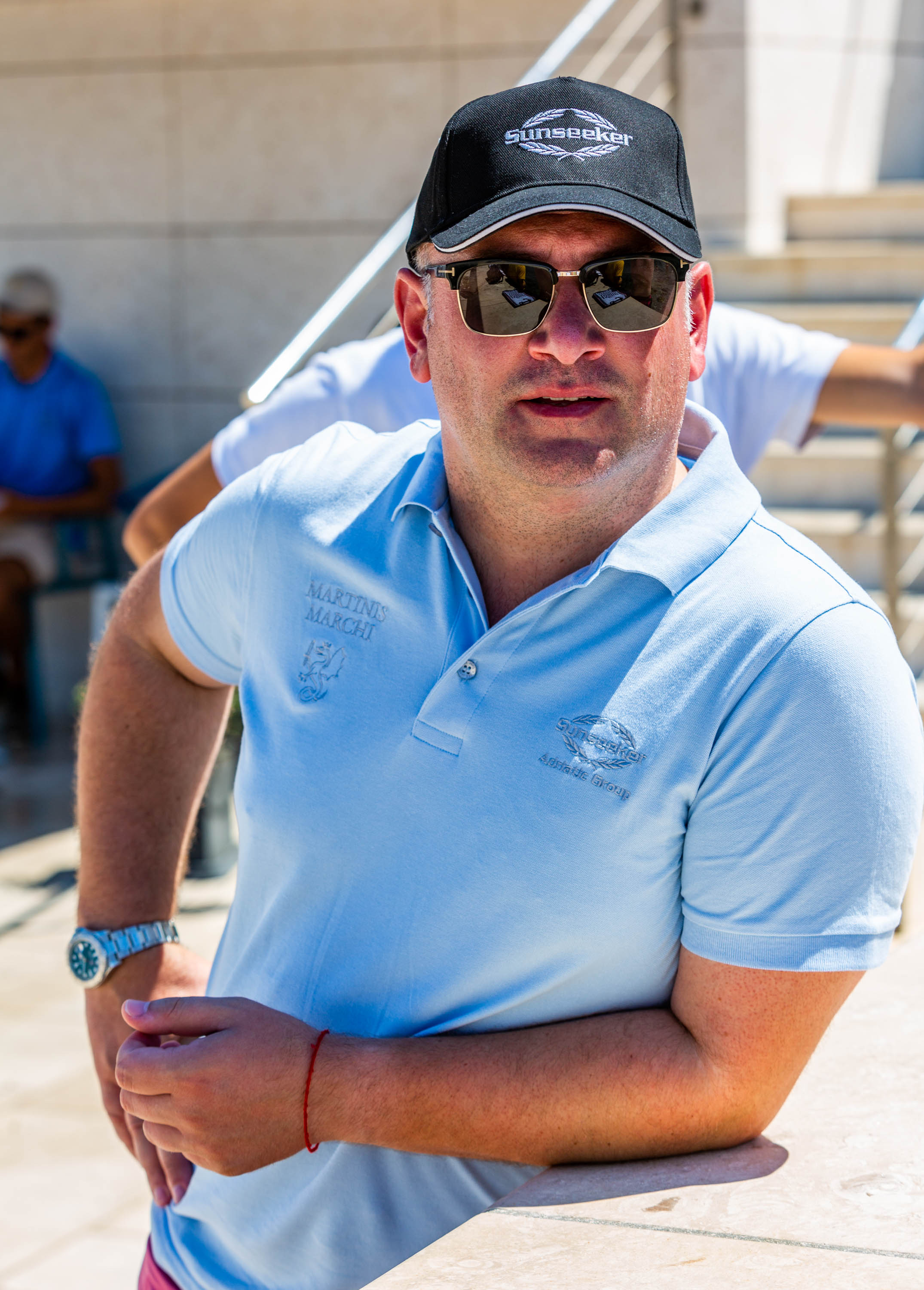
Marko Toric of Sunseeker
And this year, Martinis Marchi exceeded all expectations once again.
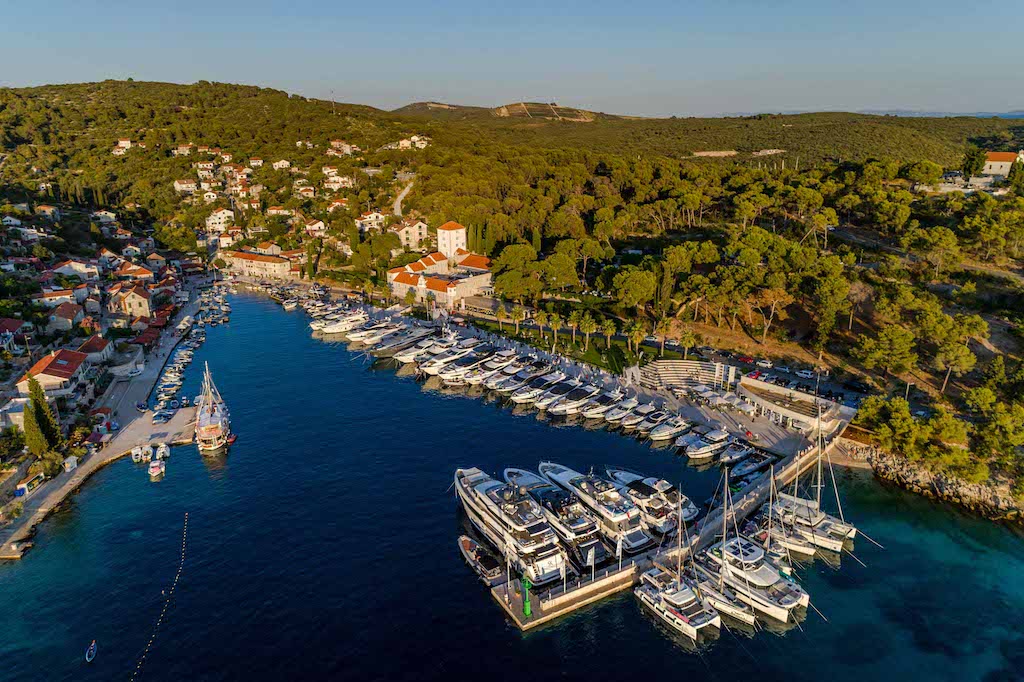
After last year's Simply White theme put all of our COVID-19 worries at ease, even if just for one dazzling night, this year's Under the Moonlight affair made up for any lost time, transporting attendees back into more glamourous times as eyes twinkled at the decor fashioned of glimmering lights.

The day began with tradition, as visitors could enjoy adrenaline water gadgets from MYYACHTTOYS, like LAMPUGA surfboards, BELASSI jet skis, and IAQUA Seadarts.
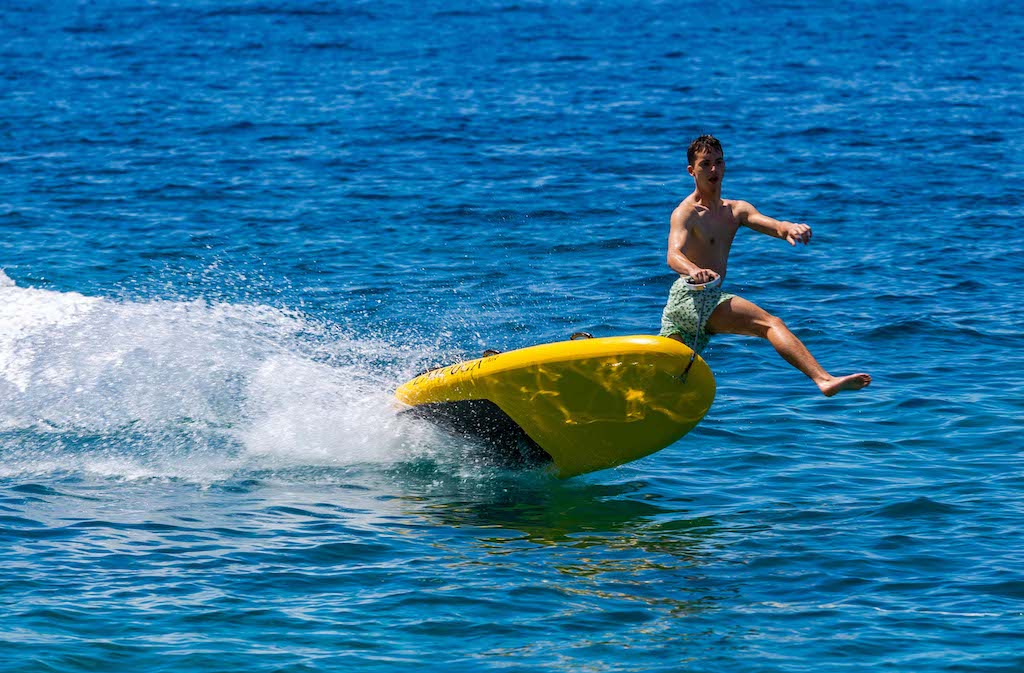
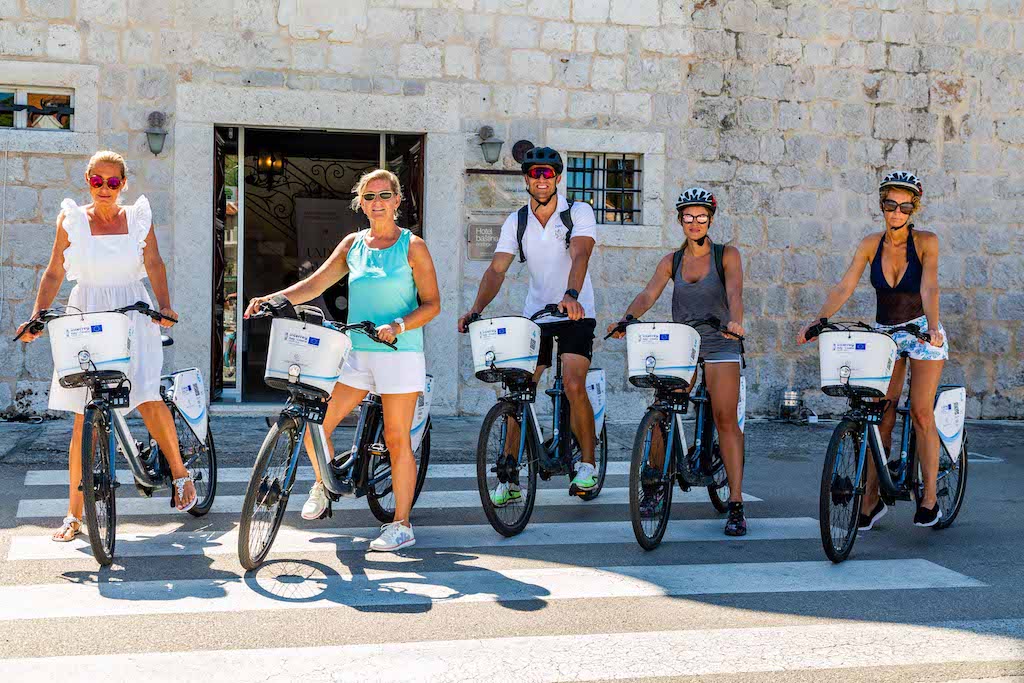
Guests could even enjoy electric bicycle tours to explore the secrets of Šolta or partake in a 2-hour art & wine date with academic painter Nina Šestanović and Šolta native Vice Buktenica, who guided guests through the basics of painting over a glass of wine in the shaded Mediterranean garden.
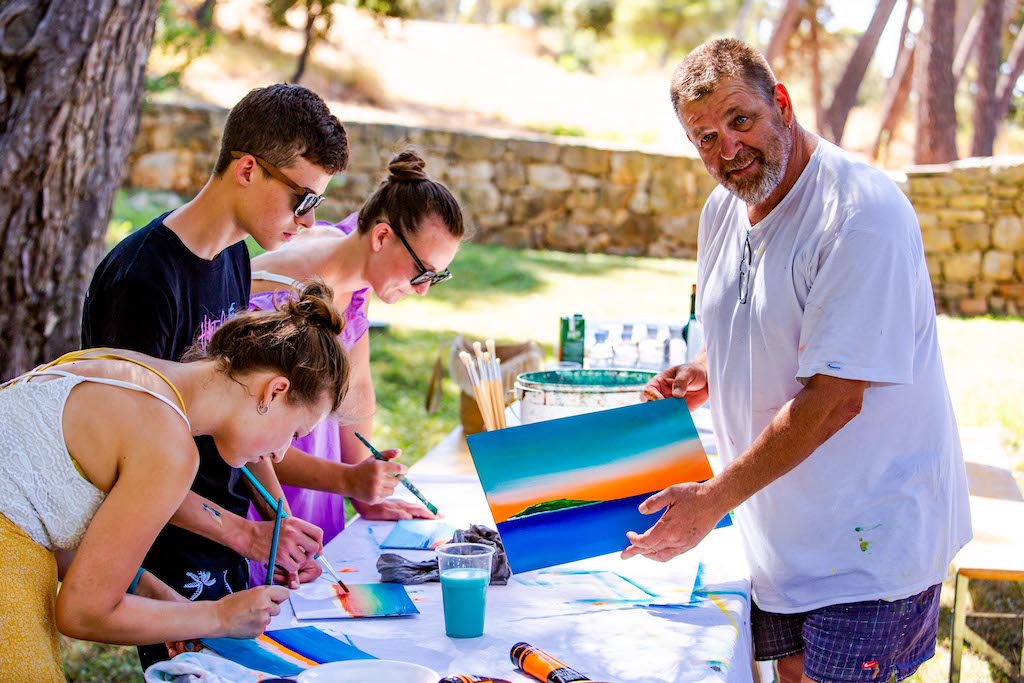

As the evening approached, a DJ heightened the island mood, and pink Beefeater Gin huts decorated the Martinis marina to showcase cocktails enhanced by rosemary and elderflower, topped with perfectly pink flower petals to complete the swanky ambiance.
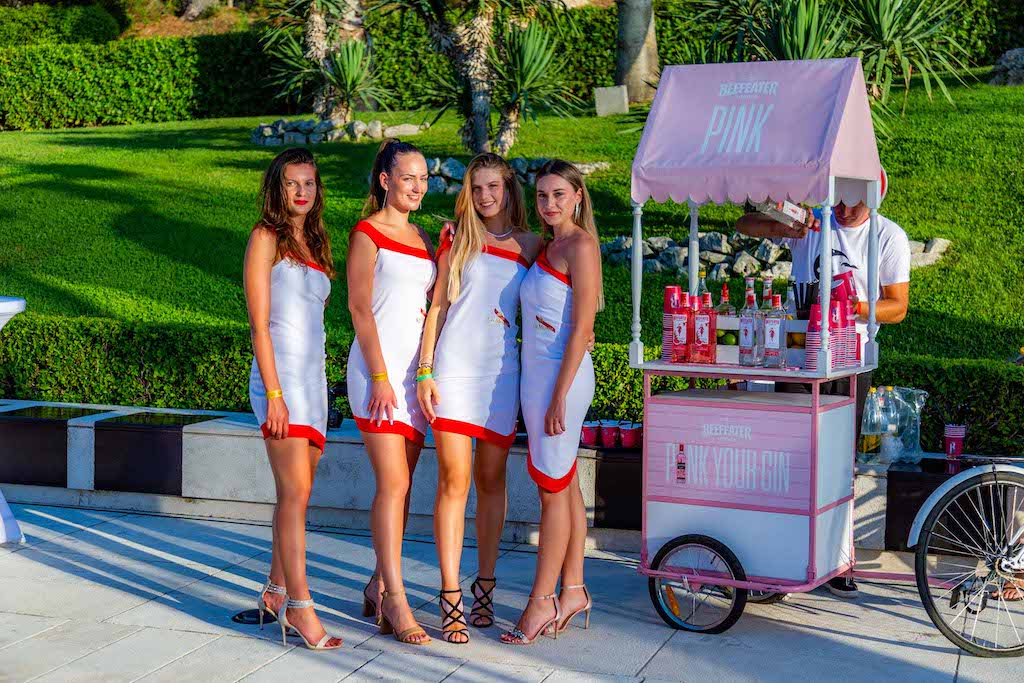
As the sizzling summer sun stepped back to let the moonlight shine, tables topped with bottles of Skaramuča lined the marina. For those of you that don't know, Skaramuča is one of the largest private Croatian winemakers and the owner of the largest vineyard in the Dingač area.

Branimir Andelic of Skaramuča
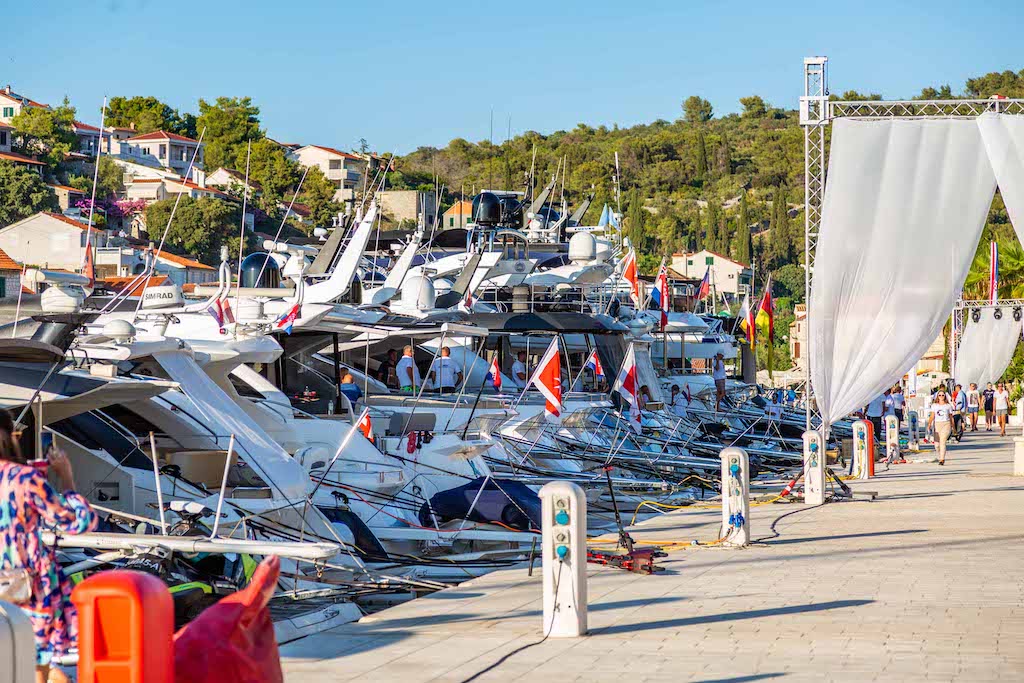

Split-based dance group Crowd Control used twists, turns, and thrilling jumps to entice the already giddy crowd while a smartly dressed brass band traversed the marina, singing a cappella tunes that had everyone's toes tapping.
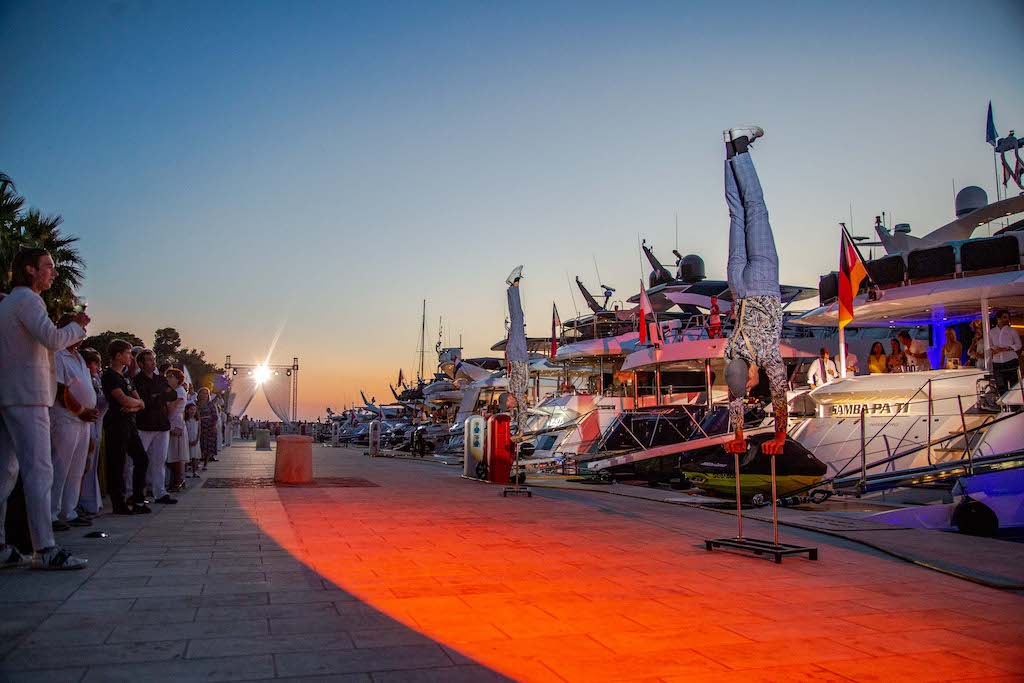

One of the many highlights of the event, as always, is the fashion show, which this year featured celebrity designer Matija Vuica, whose beautiful garments have been worn by Hollywood stars!
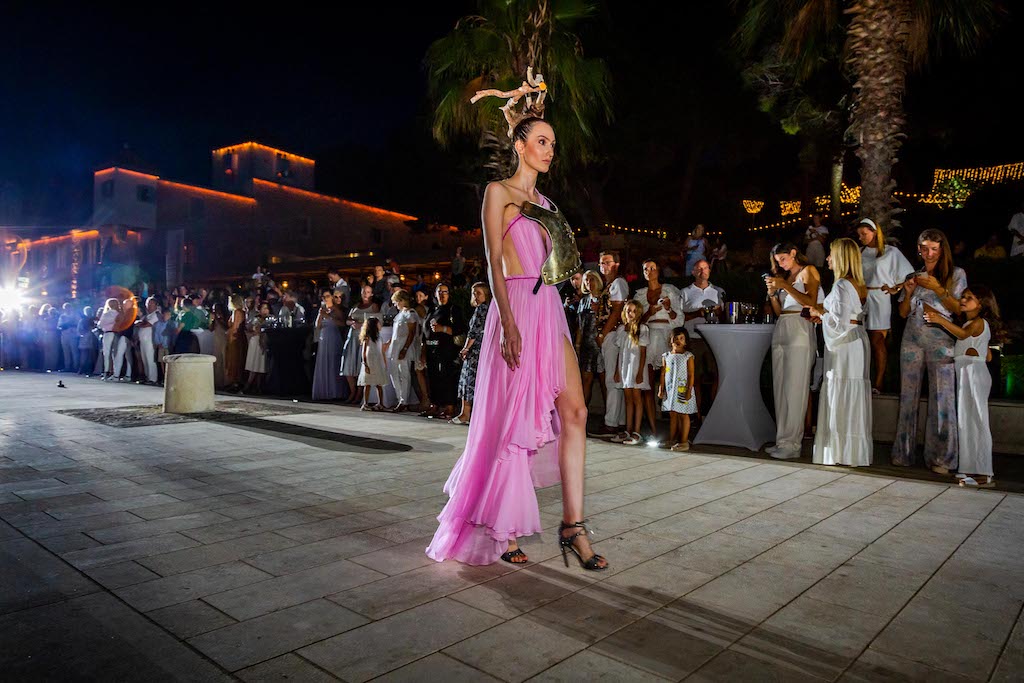
Stunning silhouettes paraded down the illuminated waterfront promenade, applauded by many as the most beautiful runway in the world, wearing eye-catching headpieces styled by Viktor Drago.
Forty dresses were presented, each handmade unique, of the finest silk and details of lace, crystal, glitter, and reflective mirrors, represented forty years of Matija's artistic work, which skillfully connects the world of fairy tales, fashion, and magical stories inspired by Croatia's authentic cultural and ethno heritage and Slavic mythology.
The installations on the model heads, which defied gravity, were made from local island vegetation and each was made to complement the dress.
"Vines, the roots of dried trees shaped into structures, pirate ships and wooden ships, and silk sails bravely sailed this unusual seaside runway accompanied by modern exclusive yachts in the audience. The indispensable agave, a synonym for storing drops of water, which means life on the island, also served as a detail in the part of the collection which serves the ancient Atlantis them," said Viktor Drago.
Unfortunately, not even photos can do these masterpieces justice.
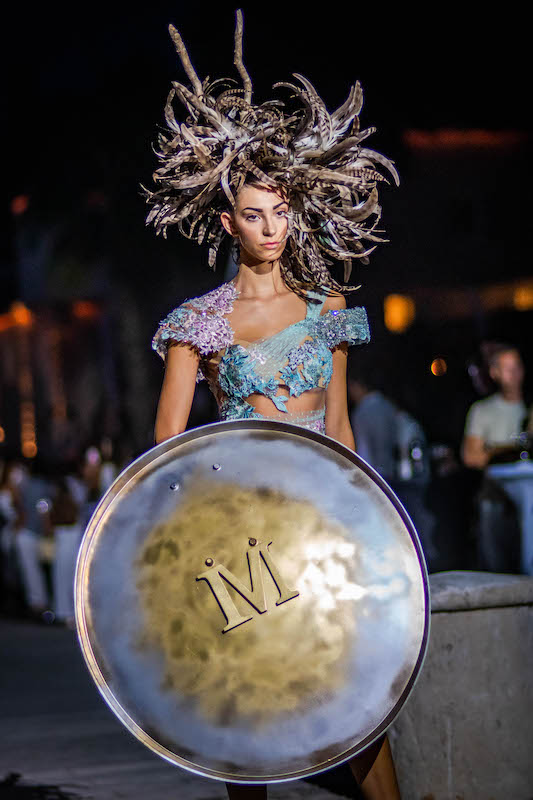
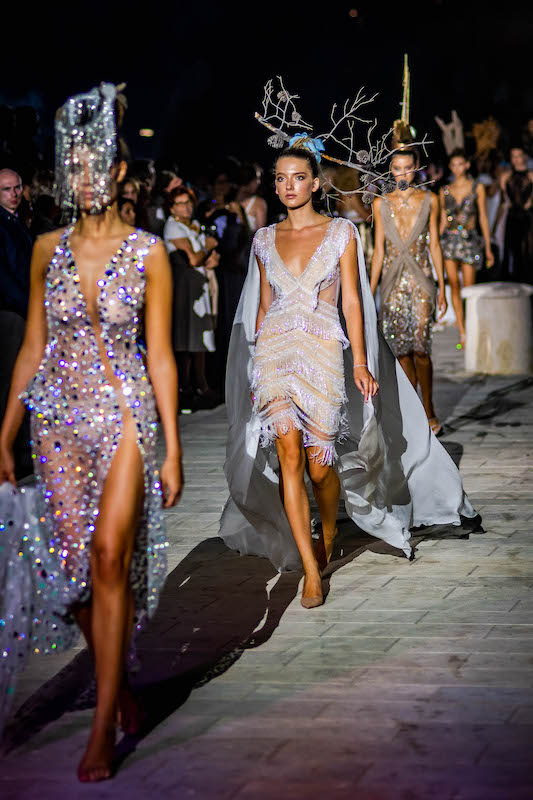
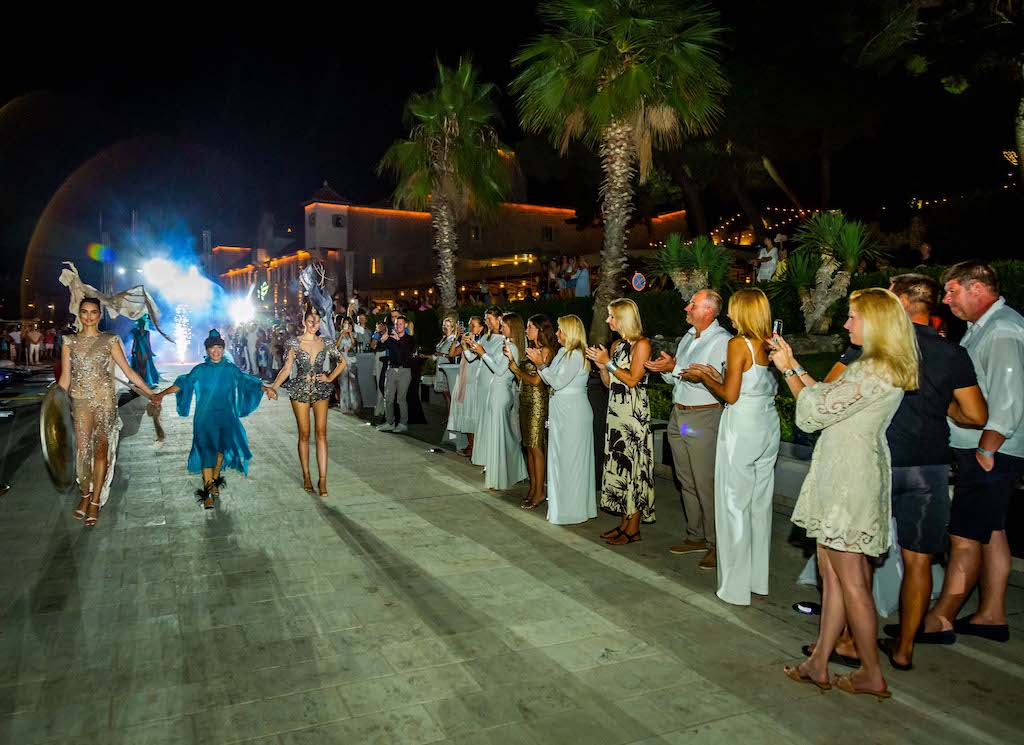
Once the fashion show came to a close, the party moved into the Martinis Marchi garden, but not before a chilled glass of Mumm champagne was poured to prepare the palate for the feast ahead.

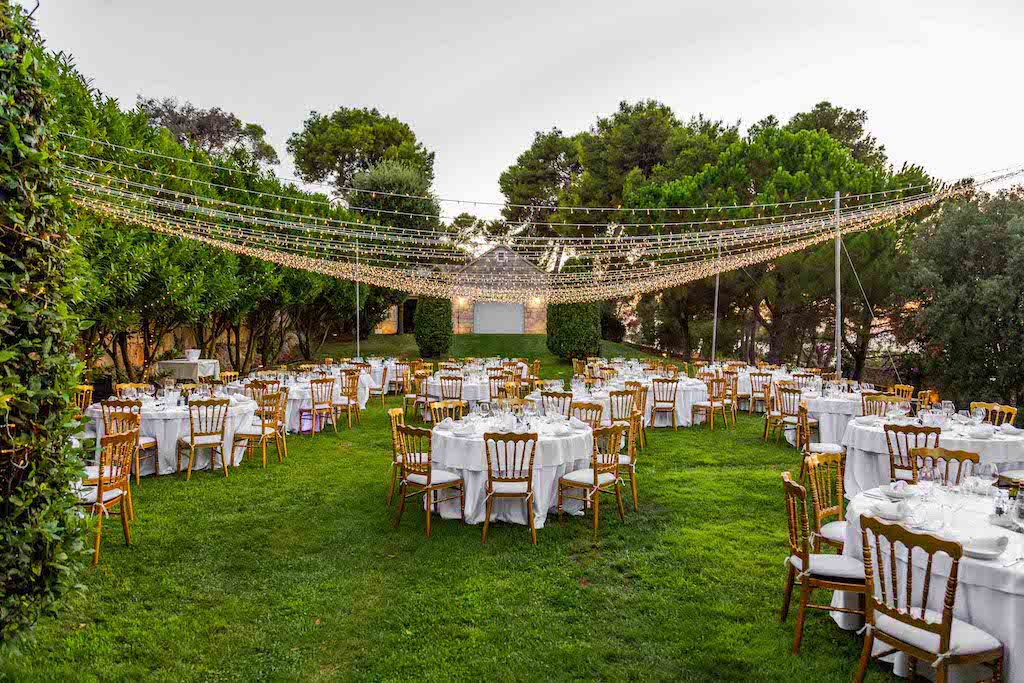
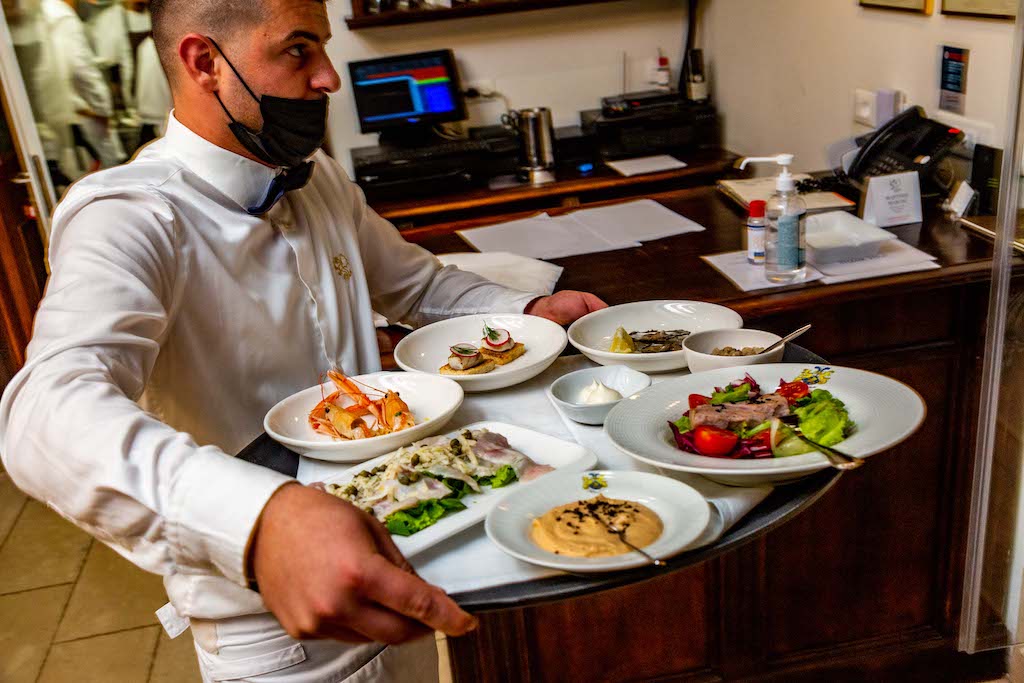
The already picturesque Mediterranean garden sparkled, with radiant lights overhead to imitate the essence of moonlight. Guests enjoyed the finest Croatian fare, coupled with crisp Skaramuča wines.

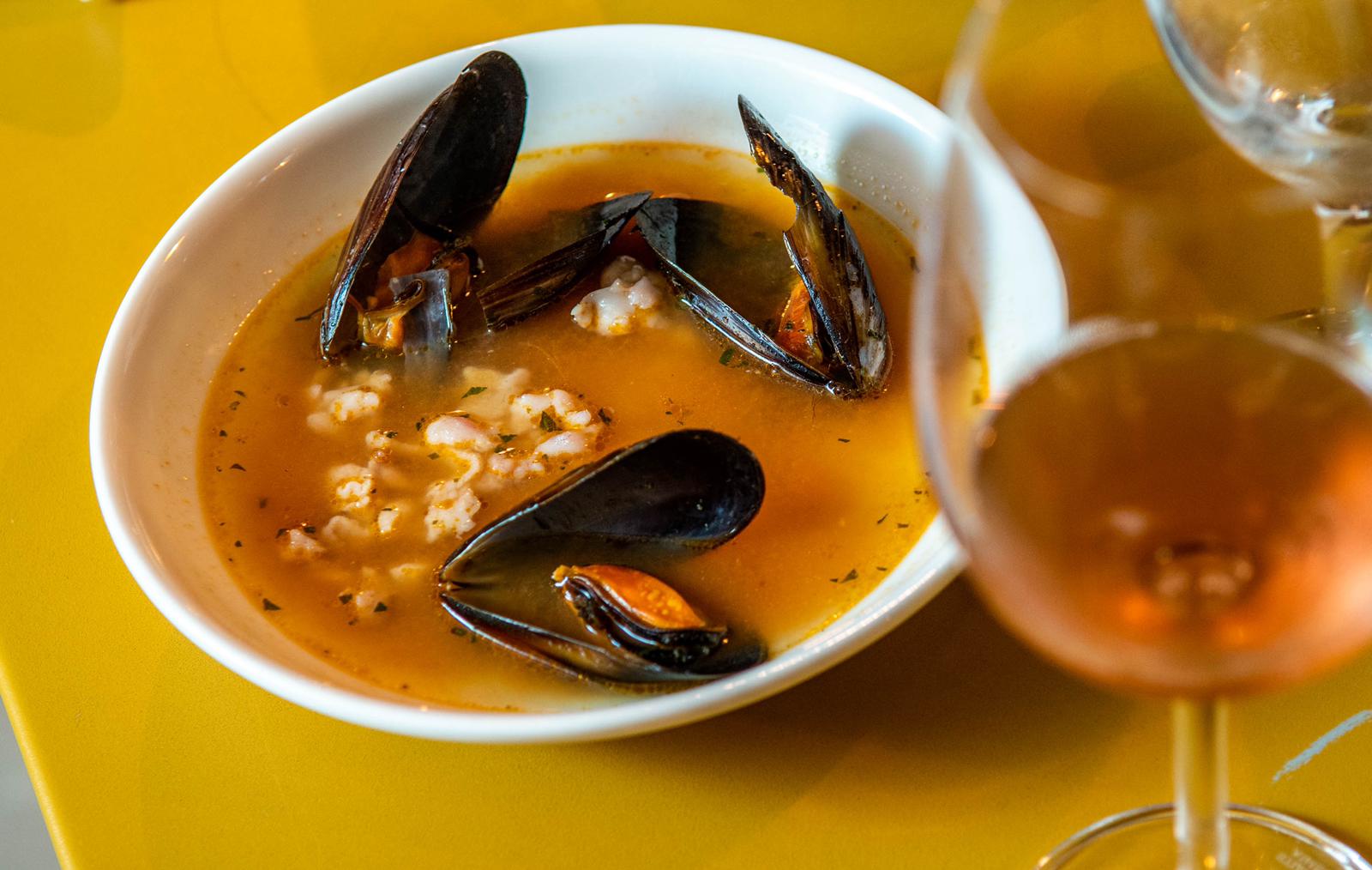
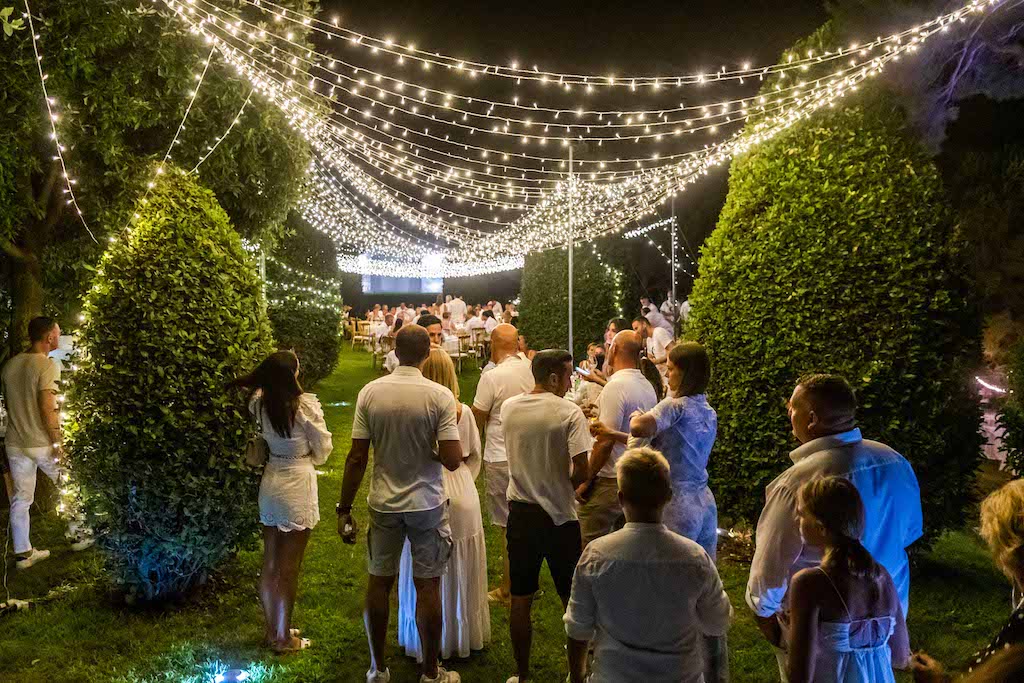
The evening entertainment did not disappoint, either, as Croatia's own Frank Sinatra Marko Tolja took the garden stage, singing the classics of yesteryear and Dalmatian hits to delight a crowd scattered on picnic-style blankets and cush pillows.
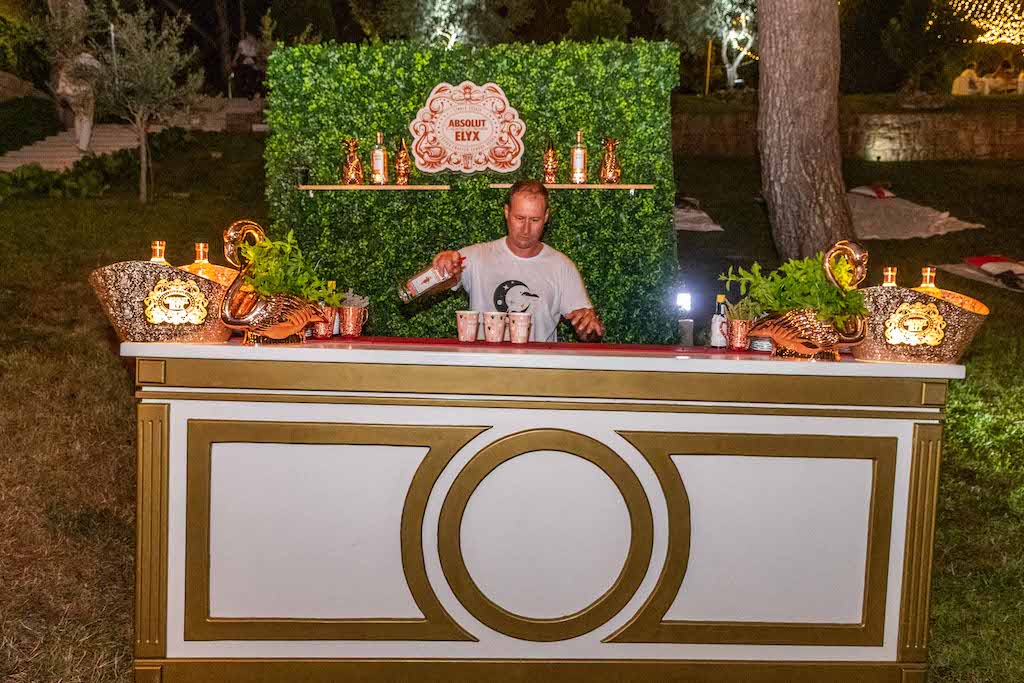
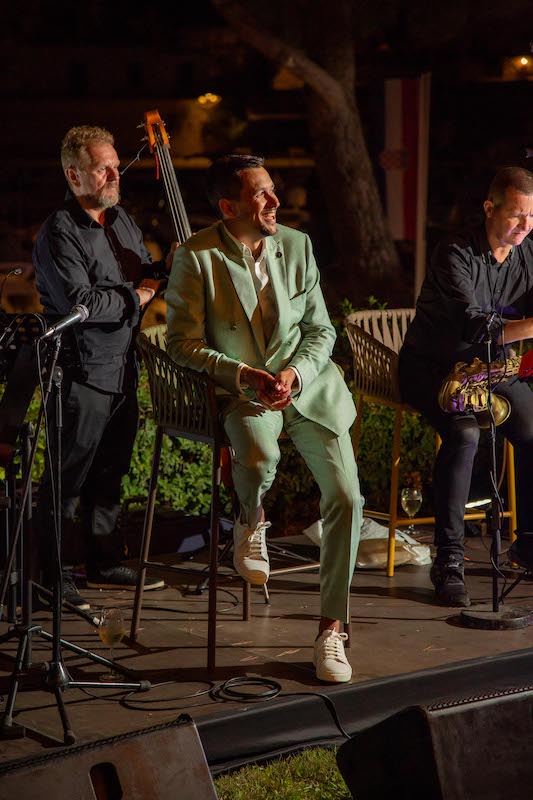
Under the starry island sky, guests danced, sang, and imbibed until the early morning hours, in an ambient only Martinis Marchi could provide. It was yet another one for the record books, an event that epitomizes all elements that make up Dalmatia's charm. An event you'd be silly to miss next year if you're given a chance.
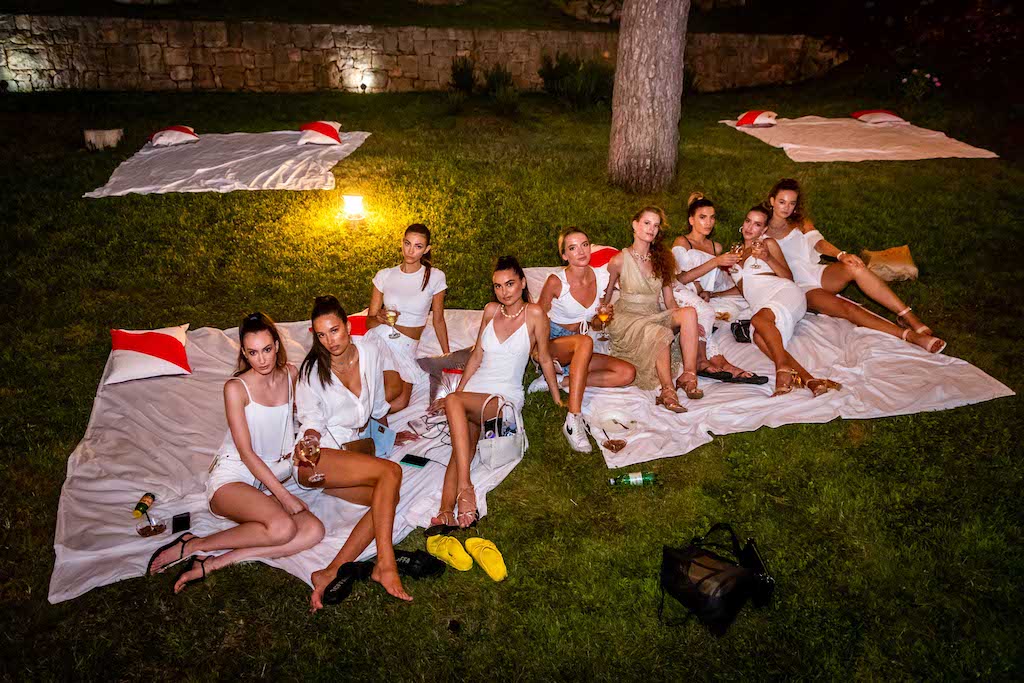
Stay in touch with Martinis Marchi by following their Facebook page, and don't miss out on another Šolta Island experience like this one!
For more, follow our lifestyle section.
A Trip on Solta Island: 6 Lessons I Learned from Locals
May 24, 2021 - A TCN intern takes a trip on Solta Island without preparation, encounters unusual experiences with the locals, and learns lessons that will be helpful for anybody visiting the closest island to Split.
1. Clothes do not make the man. A port does not make the island. Don't be too quick to judge.
Rogac port where the ferry from Split comes does not impress a traveller. Like most people, I had visited the more popular island of Brac before I went to Solta. Rogac loses out to shiny Supetar, the biggest city on Brac. The port of Rogac is tiny, there is nothing to do there, no people. However, exactly here in Rogac, the first strange story happened to me in the first hour after my arrival. I found one good angle between the yachts at the marina and sat down to take an on-arrival picture. Then someone called out to me...
"Do you know what this is in front of you?" a senior man asked me.
"No, I don't," I said. "I know what is a boat, a yacht, a ship, and this vessel is somewhere between a boat and a yacht, closer to a boat, of course, but what exactly it is, I've no idea," I thought.
"Are you a journalist?"
"No, I'm just a tourist. I came here for the weekend. I'm from Russia but currently work in Split."
"What do you think about your president?"
The question put me in an awkward position. This grandpa in a baseball cap with a canister in his hand, similar to a grandpa from 'Gravity Falls', looked nice. The matter was tricky. What's his opinion? What if our minds are the opposite? I did not want to argue with him. Senior people rarely change their minds, thus even my MD in political science wouldn't help me.
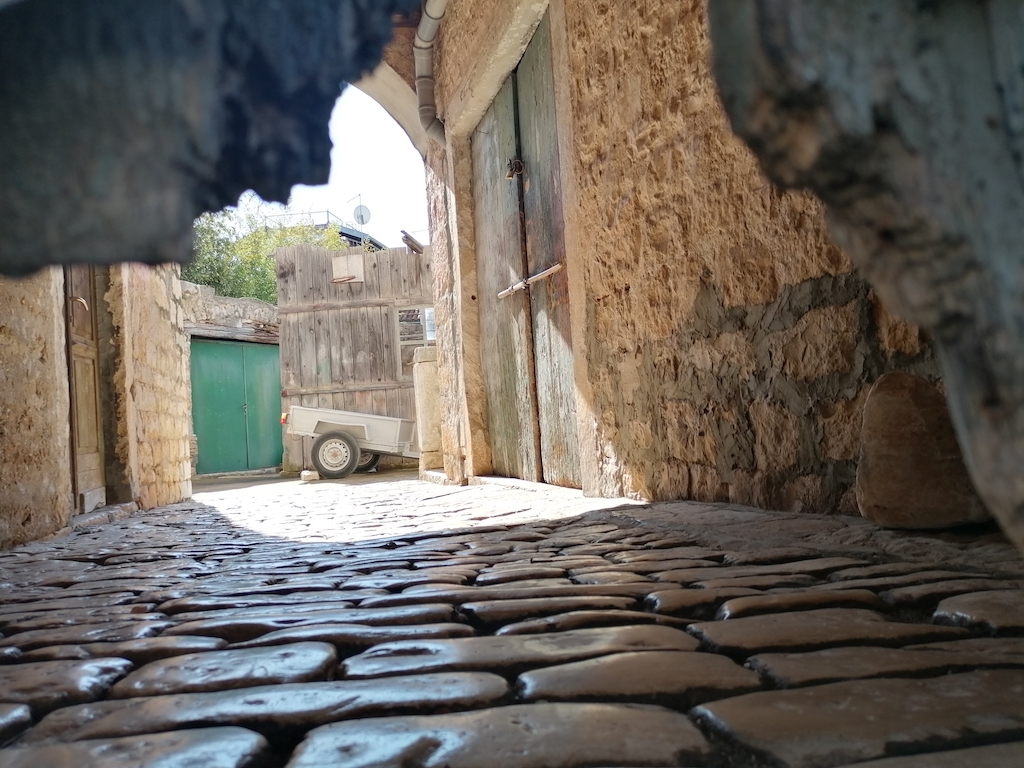
"It's hard to answer in one sentence about his 18 years of the presidency," I started to draw back the fire. Milan, that's his name, interrupted me. He told me that our president is a strong person he'd like to have as a major somewhere in Dalmatia. He said that he'd like to get vaccinated with the 'Sputnik V' vaccine. I guess that these statements should be regarded as a gesture of goodwill to me in any case.
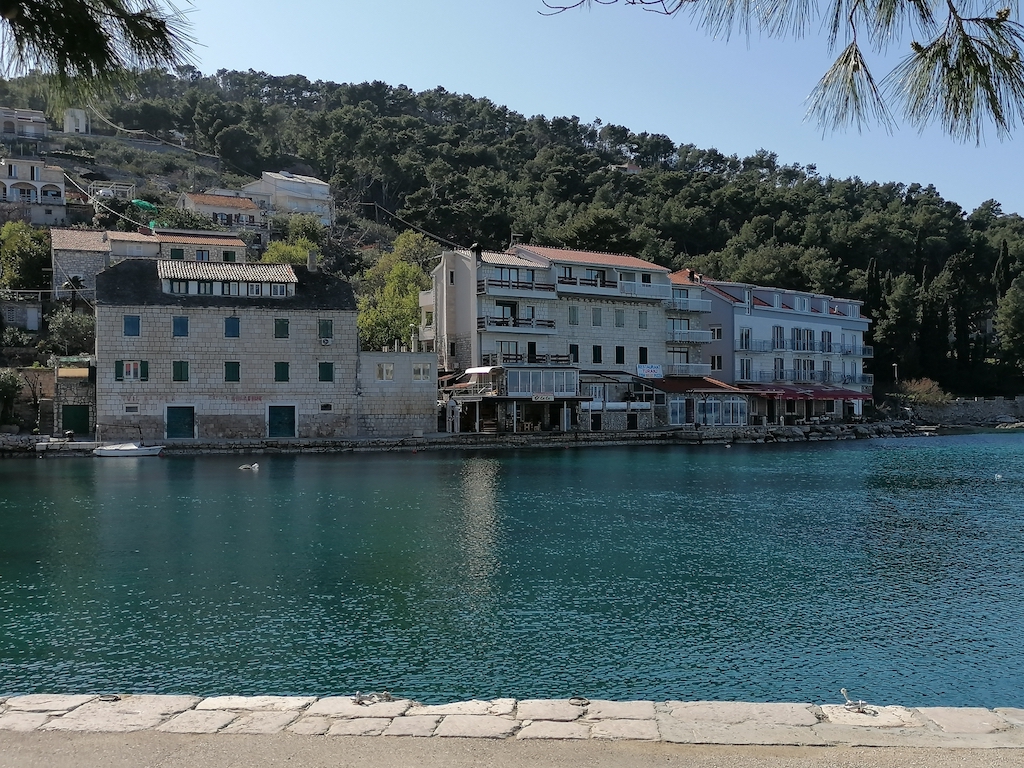
Actually, Milan knows about Russian-Croatian relations much more than the average person. He knows admiral Mate Zmayevic (born in the city of Perast, Dalmatia) who fought for Peter I in the Northern War, Alex Dundic (born in the village of Grabovac, Dalmatia) who fought for the Red Army in the Russian Civil War. He listens to Russian opera stars Elina Garancha, Anna Netrebko, Dmitry Khvorostovsky, and others. It's surprisingly pleasant for a broad-minded person far from tourist and nomad routes.
2. Take the initiative to talk to locals on the island.
Solta has wonderful nature and climate. Traditions of producing olive oil, wine, and honey here originate from ancient times. But since Solta Island is not very popular among tourists, you'll need to make more effort to get it. Even as you go to the island already prepared by informational sources, you have to be ready to ask, perhaps, to clarify something about wine tasting, olive oil tasting, or a honey farm. You go here ahead of the masses, take the initiative to start a conversation, and keep it!
I regret that I did not answer 'yes' to Milan's question of whether I was a journalist. Then I'd have more chances to guide our conversation to the topics I am interested in. Otherwise, it happened so that we were talking about themes that interest mostly a social group 70+-year-olds:
- life after death (Milan suffered two strokes and saw something on the other side);
- The Dulce Laboratory in New Mexico where human-alien hybrids were created;
- Orion correlation theory that says about the connection between the pyramids of Giza and the Orion belt;
- indigo children;
- masons, etc.
Certainly, I'd better answer that I'm a travel journalist and interested in things like what to eat, what to do, etc. So that, if somebody asks you on Solta, you can use the following answers I prepared in advance. "I'm a tourist from <...> and a wine lover."I'm a traveller and a gourmand hunting the local specialties."
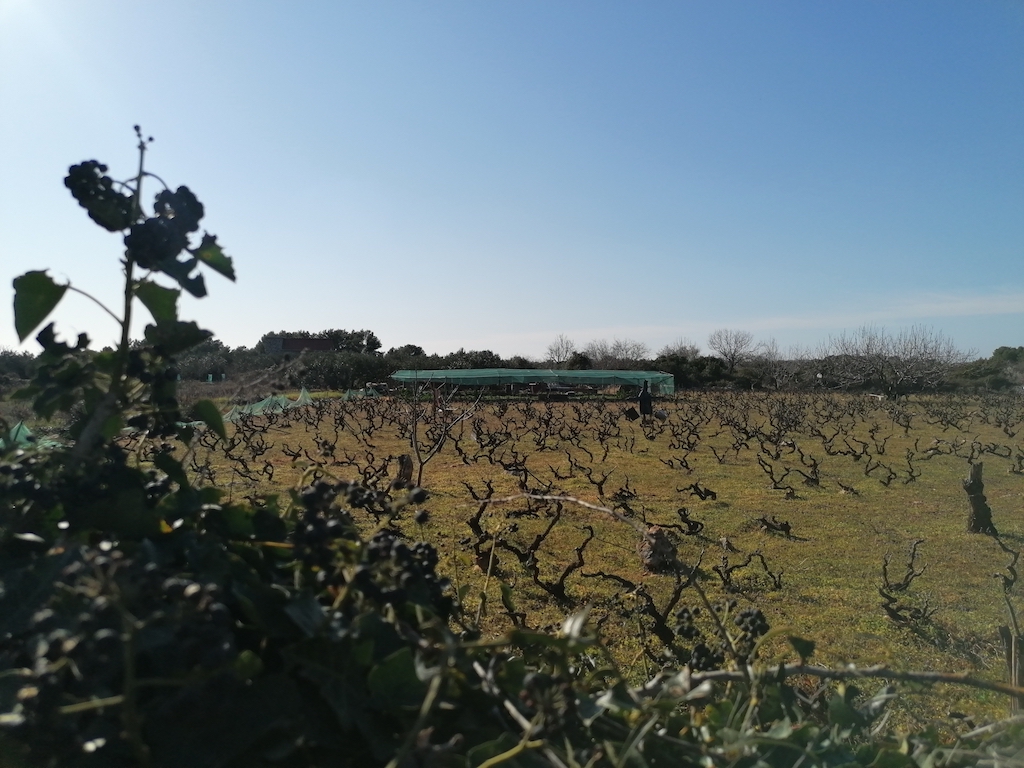
3. Don't be afraid to go around the island alone.
Saying goodbye, Milan wondered why I was here alone. "You don't have to go alone. Find yourself a husband. Not me, I'm too old for you, I'm over 72..."
I guess it was his joke about the age gap problem to marry me, because earlier he'd mentioned his wife was waiting for him at home, their three children, other common stuff.
Then he relented: "Well, all right, you can go alone. Don't be afraid. There are no poisonous snakes on the three Dalmatian islands - Solta, Lastovo, and Vis islands. But there are black widow spiders and ticks..."
As planned, I went through Grohote and Gornje Selo to Stomorska that I considered the most beautiful and lively town on the island. Besides, I was caught up in wanting to check a remark of my Croatian colleague that Stomorska on Solta looks similar to Povlja on Brac. He said it to me once I just got back from Brac. He really encouraged me, thus I'm not going to share if it looks similar or not. Go and check it by yourself!
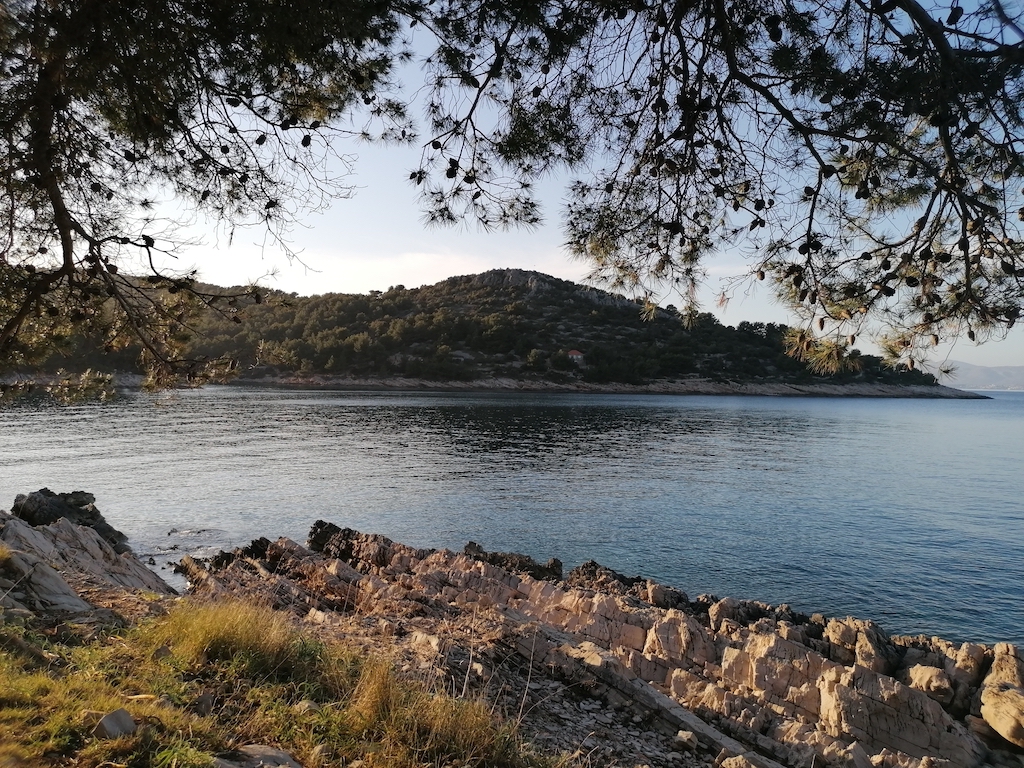
I went through almost all the island - from Rogac to Stomorska - by foot. It was a safe and quiet way, not a lot of cars passed me. For sure, it'd be more convenient to go by bicycle, but if you have the time it's possible on foot. On my way back I accepted a proposal of one passing car to take me to the port. I guess you can also have this possibility in mind. As far as there are no regular buses, it's a kind of local solidary to take somebody by car.
One difficulty I faced in Stomorska was the fact that all the cafes and restaurants were closed. I came before the beginning of the tourist season and caught the middle of constructing and cleaning works around terraces, but it was closed. We might endlessly watch water, fire, and other people working, but not on an empty stomach.
4. If something goes wrong, you can always sleep on the beach.
I didn't plan on going to Solta a second time. I have already visited the largest and most beautiful town of Stomorska. I met a wonderful grandpa Milan who told me that Split needs a mayor like the Russian president and that our bodies are just food for aliens secretly dealing with the government. What else is needed?
Then my Split friend Andrea tried to convince me that the most beautiful place on the island is Maslinica, not Stomorska. Andrea knows it for sure, because her aunt lives in Maslinica, and she's there every summer.
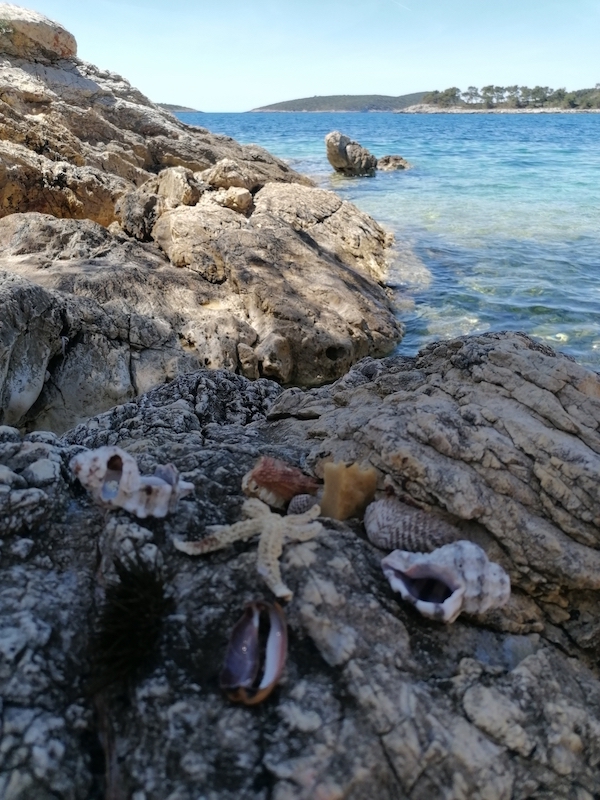
However, I still couldn't decide whether to go - to Brac or Solta - for Saturday sunbathing. At the last moment, I blurted out "Solta" at the checkout. "On the first ferry, please!" I totally forgot that the first ferry is at 6:40 am. "Nevermind, I'll go to sleep earlier today!" Then I recognised this ticket purchase was a fundamentally wrong decision. That Friday we celebrated Sveti Duje, the day of the saint patron of Split. There was no chance for me to escape the celebration and go to sleep earlier.
A suddenly emerged thought saved me from the desire to throw the ferry ticket into the sea from the pier where we celebrated Split City Day in the middle of an incredible post-covid standard crowd until 2:00 am. I thought that I could sleep on the beach of Maslinica on Solta. After 3.5 hours of sleep at home, I packed up and ran to the ferry.
5. Sometimes it is helpful to talk to a homeless man.
Solta is the closest island to Split. By ferry, one way takes only one hour. Once I'd settled on the ferry, I fell asleep. Thank you to the kind Croatian woman next to me who woke me up! At the port of Rogac I checked Google maps - 2 hours walk to Maslinica. 20 minutes later I reached one of the three 'towns' of Solta where you can find a supermarket.
Entering the supermarket I noticed a very colorful homeless man on the bench in front of it. He looked like Ali Baba. Red down jacket, harem pants, white apron, blue hoodie tied around the neck instead of a scarf. Fingerless gloves. A black beret holding a tuft of long gray hair and a gray beard. I had to restrain myself from taking a picture of him. I was not going to sponsor his vodka.
I had to restrain myself, but failed at the checkout. Too good a type! He was standing on the other side of the glass door while he noticed me taking a picture of him. He was waiting for me at the exit. "Take an initiative talking with locals. Don't be afraid!" I calmed myself. "Please, sir, may I take a picture of you?"
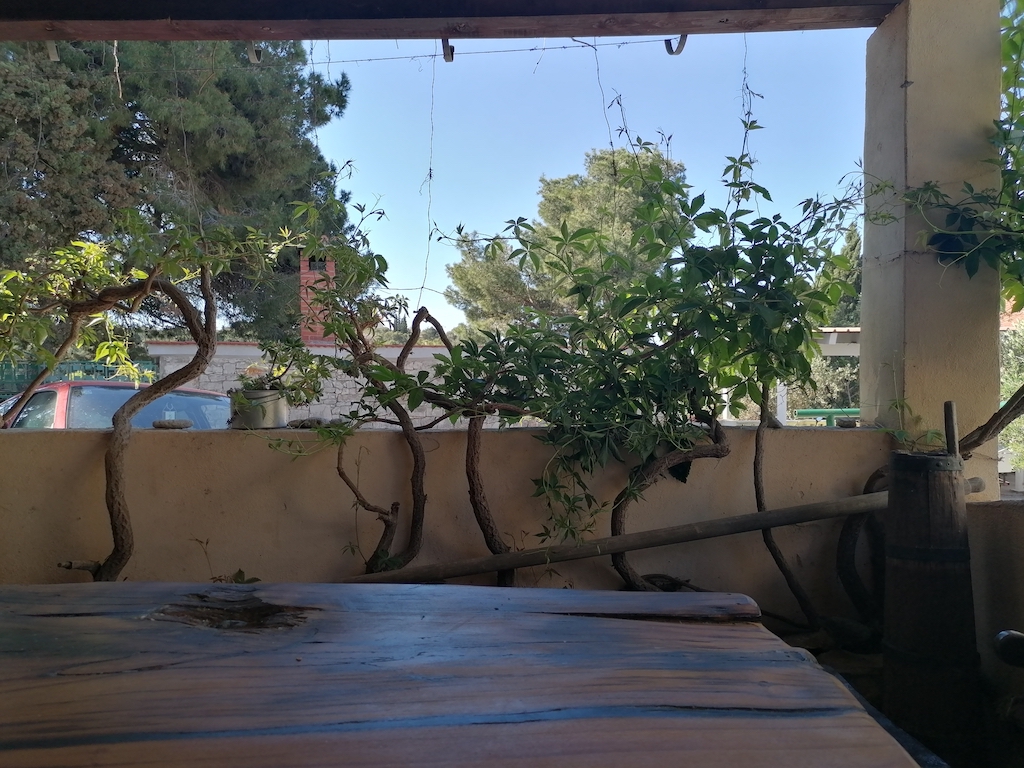
On the fifth attempt, the homeless man guessed that I was from Russia. Novorossiysk (Russian port) - Izmail (today's Ukraine) - Gori (Georgia). That's in general how his path in USSR looked like. His work had something to do with the sea as I understood. "I had a great company in the Crimea," he said. "I still remember those five Russian women surrounding me: Lyuba, Zoya, Nina..." It seems to be true, in those days the names were popular in the Soviet Union. The man was in Poland as well, in the Czech Republic. He worked in France for six months, then in the United States...
He remembered a few sentences in Russian. Here on the island, there were some Russian girls in Necujem. He taught them three main phrases in Croatian:
- Mi se svije Hrvatska. (I like Croatia).
- Ja ću se udati za Dalmatinca. (I will marry a Dalmatian man).
- Ja sam dobra pička. (I'm a good p***y).
Well, I can trace some logical connection here...
6. Have a list of souvenirs from Solta.
Homeless Ali Baba asked me how long would I stay in Croatia. He began to think about what souvenirs should I send to my family in Russia. Solta olive oil, Solta honey, Solta wine, Rogac bean for baking, lavender...
"I will collect it for the next time you come to Solta. I have oil, wine, a farm, 7 chickens, 2 houses... You can sleep in one of them, and I'll stay in the other. Is it okay? Take some lavender I picked this morning. Here you are. Do you know that there are two types of lavender? Do you want a chocolate bar?"
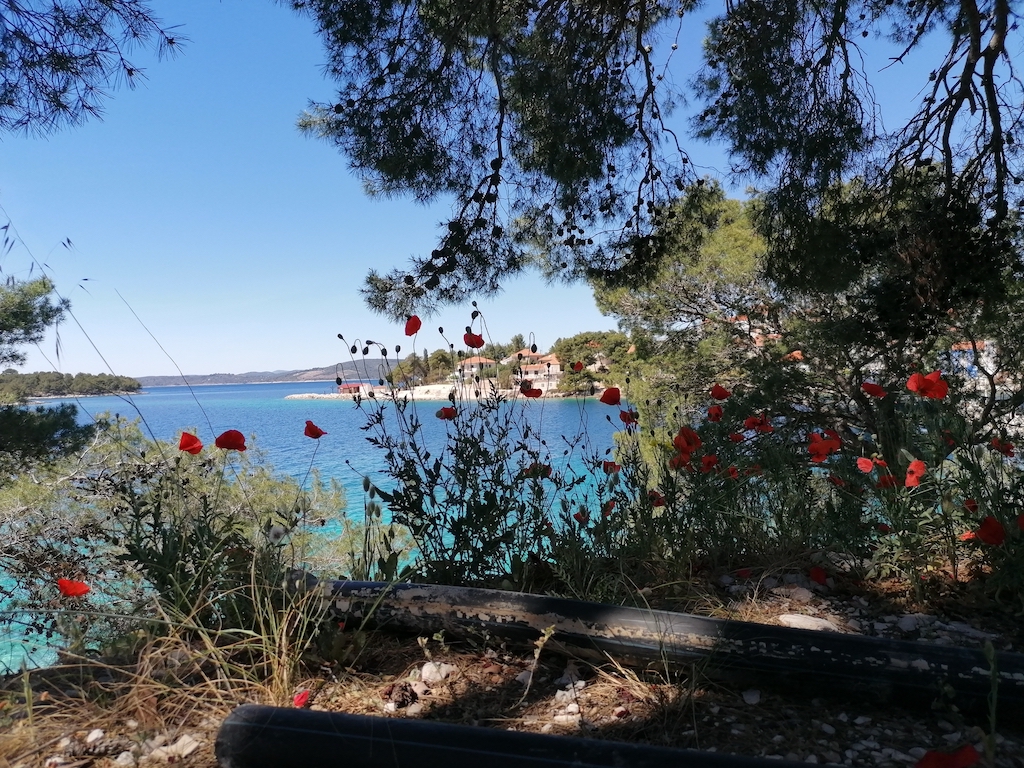
I jumped aside as Ali Baba touched me with lavender. Flowers do not excuse the whole stench. And the worst thing was his long nails. I was at a loss. Some parts of his story seemed plausible. However, I could not find any logical connection between his own farm and the homeless look. Two houses? I'm not going to believe in it.
The situation that we were standing in the center of the town nearby the only supermarket seemed even stranger. People passed us by us every five minutes. They greeted Ali, in response he defiantly showed me to everyone. "Look, such a beautiful Russian is talking to me!" Passersby looked at me with a grain of compassion, but they passed by further. Then one of the passers-by had heard that I was on my way to Maslinica and offered to give me a ride. He was going in the same direction. Thank you, Igore! I quickly got in the car.
Recap
1. Clothes do not make the man.
In the end, I got to Maslinica in 15 minutes by car, not in 2 hours by foot. On the way, Igor explained to me that Marin Kumin (that's the true name of 'Ali Baba') was not homeless. He does have things he mentioned. He's not a foolish man. Unfortunately, he went crazy in the sea about two years ago. Since then he has not been washing, shaving, cutting his hair. It looks scary from the outside. But he's not what he seems to be.
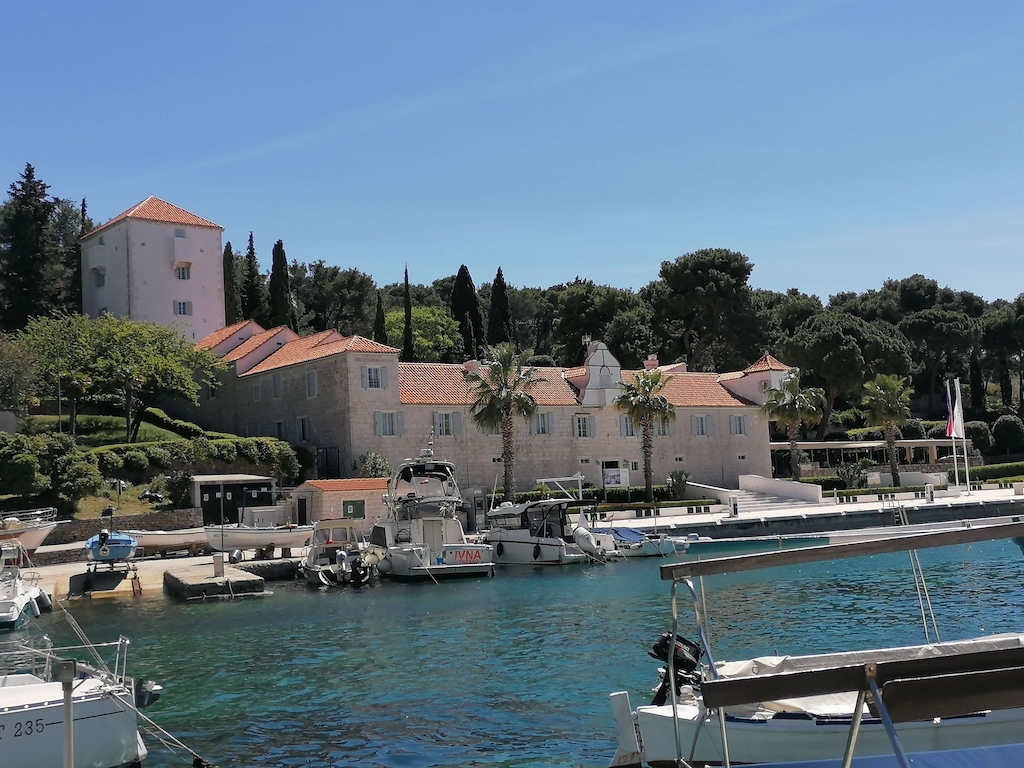
2. Take the initiative to talk to locals on the island.
I would probably consider the breakfast that Igor fed me after we came to Maslinica - coffee and toast with Solta honey - as a part of traditional Dalmatian hospitality. But the best lunch I've had in Dalmatia would never happen if I had left his place in a rush, without any conversation. I asked about a fishery on the island - I had lunch with Igor and his friends-fishermen. We ate the tuna they caught the day before. I had only known about tuna from canned food and Hemingway's story 'The Old Man and the Sea'. My concepts were turned upside down. Eventually, I found an island where there's more fish than meat.
3. Don't be afraid to go around the island alone.
Igor showed me the Maslinica neighborhood, Martinis-Marchi castle, and a way to a beach. Then I went alone to an empty rocky beach. I swam also alone, although there were some yachts around. No fear. I was a little worried that nobody will notice if I drown. But as I got out the beach marine officers asked me about the temperature of the water and how I felt.
4. If something goes wrong, you can always sleep on the beach.
It was my first swimming this year. The water at the beginning of May was still cold. I swam for five minutes. Never mind, then I slept on the beach. And then I swam two more times.
5. Sometimes it is helpful to talk to a homeless man.
I mean a keen conversation, lavender and the fresh tuna I had!
6. Have a list of souvenirs from Solta.
Try to do it in advance, because when you come outside the tourist season, it's complicated to get the souvenirs immediately. I didn't succeed to take a bottle of Solta olive oil on the same day, so I had to go back again.
For more on travel in Croatia, follow TCN's dedicated page.
Croatia Through the Eyes of a Digital Nomad: Give Bees a Chance
September 22, 2020 - How does Croatia look through the eyes of a digital nomad? TCN is delighted to welcome new columnist Cyndie Burkhardt, who will be sharing her exepriences as a digtal nomad in Croatia. And where better to start - give bees a chance from the idyllic island of Šolta.
Still being a newbie in Split (I’ve lived here since March 1), I’m keen to see as much of the Dalmatian coast as possible. This time of year the islands dotting the Adriatic Sea are calling me. I’ve come to learn that many of them are known for something among Croatia’s vast natural resources and specialties. Šolta has come up several in conversations extolling its reputation for honey. That was all I needed to hear—indigenous food and Croatian culture. I was determined to visit.
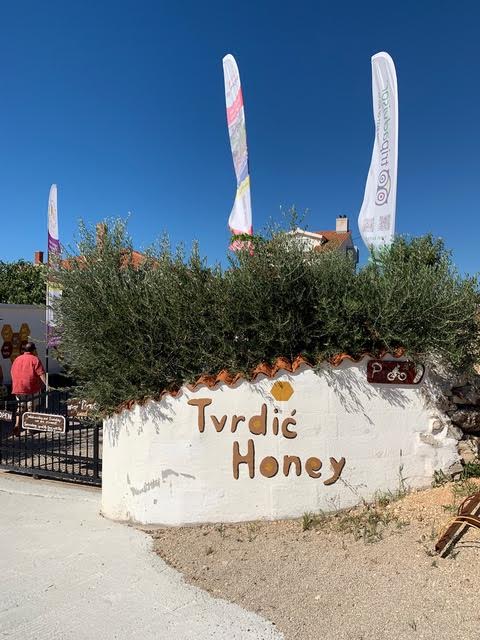
Tvrdić Honey farm
I buy local honey in every country I visit. The most intriguing so far was in Malaysia, where I was introduced to a rare treetop variety. Meaning, industrious “honey hunters,” as they’re called, literally climb to the very top of very tall trees to extract it from a hive. Malaysians claim it has exceptional nutritional value. Taste-wise, it was divine. I view honey similar to wine varietals—environment, land, and weather make it unique. I enjoy experimenting with different flavors in my morning tea, itself from a selection of loose-leaf varietals. Plus, I feel like I’m doing my body a favor. Local honey is supposed to be good for you, possessing vital nutrients that support the immune system and antioxidant benefits.
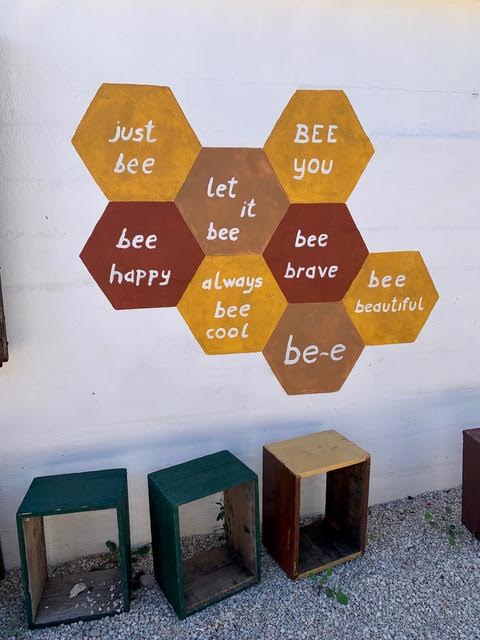
Positive messages reflect family philosophy
I found Tomislav Tvrdić, of Tvrdić Honey, and signed up for his “Give Bees a Chance” tour. I took an early boat from Split and met his father Goran straight away. The minute I saw his warm smile I knew I was in good hands. Goran is a 3rd generation beekeeper, making Tomislav the 4th. His grandfather started the bee farm in 1934 and his father kept it going. Where those two dabbled with it outside of their regular jobs, Goran took it on full-time. He’s clearly passionate about “the animals,” as he calls the bees.
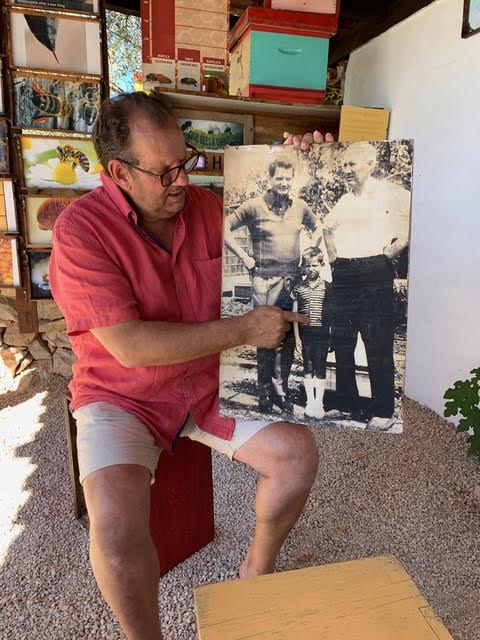
Three generations of Tvrdić family; Goran center
We arrived at the farm he went straightaway to “the store,” a huge fig tree that I could see towering above the roof. When he came bounding down the ladder, he extended his hand with a basket full of the ripe fruit. We chowed down right there, along with his wife and Tomislav, while chatting about bees and the family’s history.
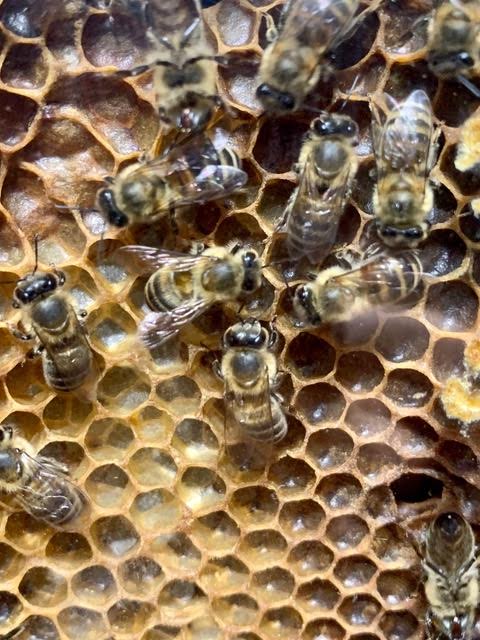
Worker bees in a honeycomb
By the time we moved into the learning center, a modest setup of chairs and props across the yard, we’d established a comfortable conversation. Goran told me about the six products that bees produce. Who knew there were so many? Their bodies emit poison (think bee stings), royal jelly (a top-of-the-line secretion that worker bees deposit directly into the queen as her premium food source), and propolis, a natural antibacterial. Bees also make honey, pollen, and wax.
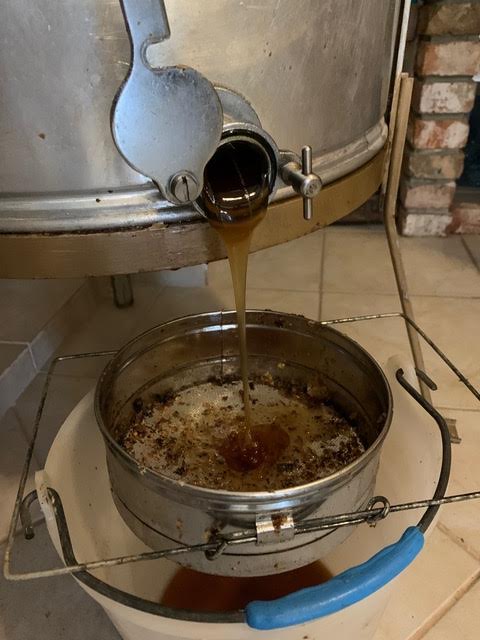
Fresh honey spun from a comb
Goran is a purist and stores pollen in the freezer for maximum freshness and effectiveness. He also warned me to check the temperature of my tea before adding honey. It needs to be under 105°F (40.5°C). Violate these rules and you’ll kill the product benefits, making it pointless to use them. To him and many others, bee products are medicine, especially Manuka honey from New Zealand. That one is used by doctors for antiviral, anti-inflammatory, and antioxidant properties. At prices up to €200 per jar (roughly $237), you would hope that claims of wound healing, cold and flu prevention, and curing oral ailments are accurate.
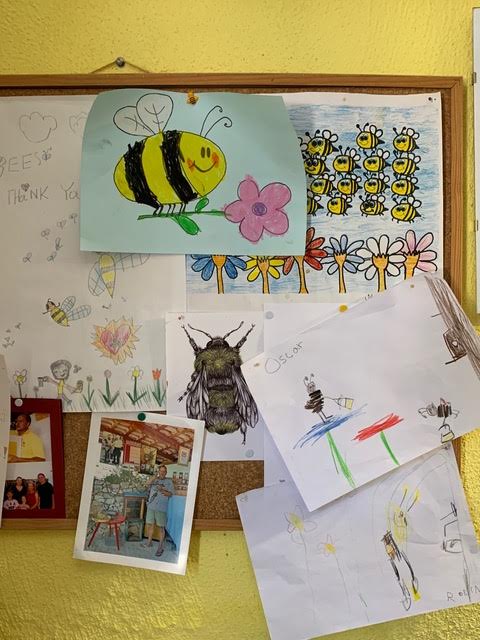
Community board with photos, notes, and kid’s drawings
I’m not a fan of bee pollen. The stuff I’ve eaten was crunchy and pungent, limiting its use to blended foods to make it palatable. Ok for a smoothie, but not my morning tea. Goran fetched a container from the freezer. This pollen was soft and delicious. It nearly melted in my hand and each tiny nugget had a rich, complex taste. Our fingers stained slightly yellow from pinching little bites, similar to the color of turmeric. Mind blown. This, I could eat.
After discussing bee sex and the lifespans of the queen, drones, and workers, Goran and I went into the shop to see a colony at work and taste gooey honey right off the comb.
I noticed a creamy looking product that turned out to be a blend of pollen and honey. In that combination pollen doesn’t need to be frozen. Great, I needed to try it! Šolta’s rosemary grows everywhere and naturally lends itself to ružmarin domaći šoltanski med (rosemary homemade Šolta honey), one of Tvrdić’s main products along with kadulja (sage) honey. Yum. My backpack filled up quickly.
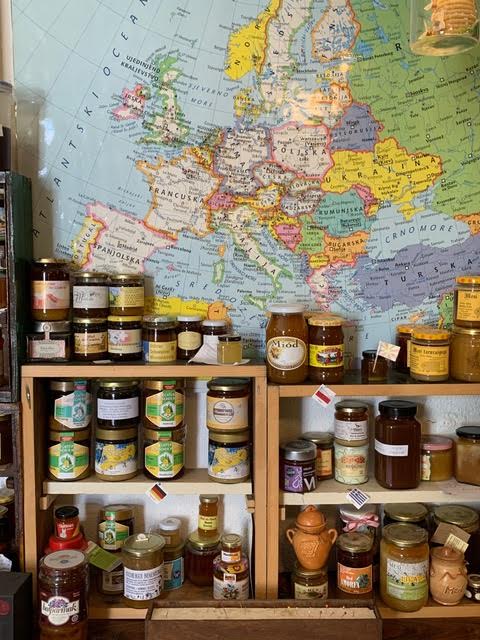
Visitors from around the world send honey from their countries
Inside Tvrdić’s part shop, part museum, I gazed at world maps and a massive, international honey collection while chatting away. I felt a nice connection with Goran and his family and I completely lost track of time. I prepared to leave and apologized for keeping him well past our scheduled tour as the clock ticked toward 2 hours. Oops!
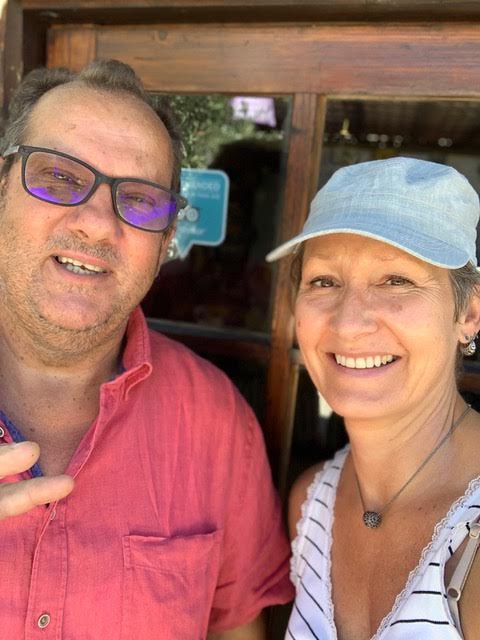
Goran Tvrdić and the author
He seemed completely relaxed and ok with it. For him, life is about doing what you’re passionate about, meeting people, and authentic local experiences. The many cards and personal notes throughout the shop, including drawings from kids and gifts that people have sent from around the world, prove that Goran is onto something. In a final gesture, he sent me off with a container of fresh figs. Could this guy be any nicer? This must be the famous Croatian hospitality I’ve read about.
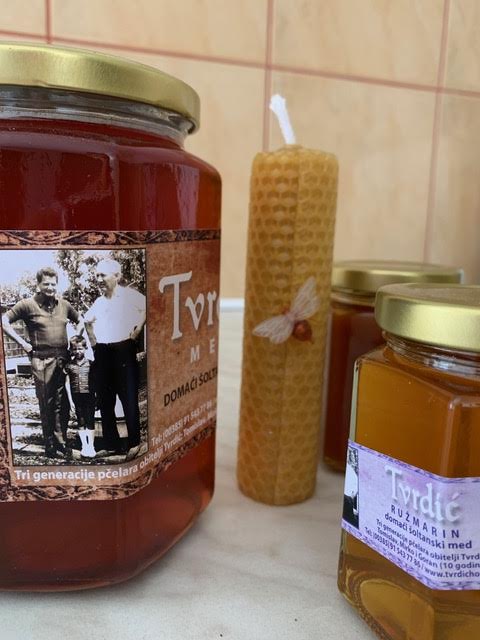
Tvrdić Honey products
When Goran first picked me up at the ferry, he asked about my plans for the day. I mentioned swimming and then lunch after our tour. He dropped me off at a small inlet with clear blue water and pointed out a couple of dining spots. When it was time to eat I headed to Pasarela and settled in for a plate of crni rizot, the traditional Croatian dish I’ve been wanting to try since I arrived here six months ago. It was absolutely delicious. I washed it down with my new favorite drink, Pelinkovać and tonic.
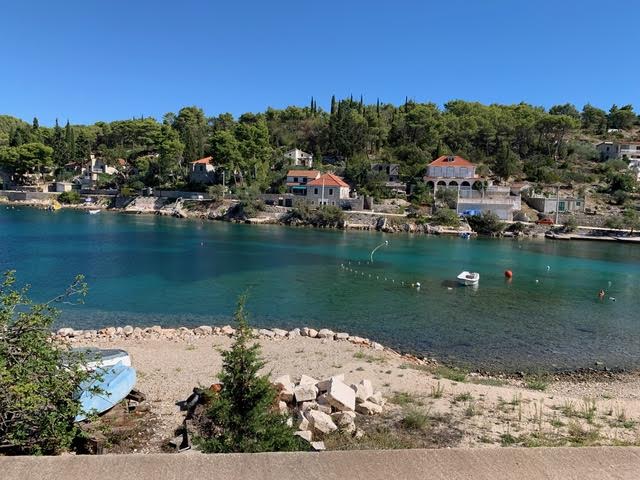
Swimming inlet
I wore a silly grin on my face for the rest of the afternoon, touched by the kindness of strangers and soaking up my perfect Croatian day.
Learn more about Tvrdić Honey and schedule a tour.
Story and photographs ©2020, Cyndie Burkhardt. www.photo-diaries.com.
You can follow the latest from Cyndie's column, Croatia Through the Eyes of a Digital Nomad here.
For the latest news about digital nomads in Croatia, including that sought-after nomad visa, check out the dedicated TCN digital nomad news section.
Martinis Marchi Impresses Yet Again: A Simply White Themed Summer Bash to Remember!
August 2, 2020 - The corona couldn't get in the way of the Martinis Marchi annual summer bash, which was held under the 'Simply White' theme on Saturday night in Maslinica on the island of Solta.
Another year, another blowout by Martinis Marchi, whose annual summer party continues to cement itself as the hit of the season.
After attending my first summer soiree in the magical Maslinica back in 2017, I quickly learned it was an event that no other could rival - though Martinis manages to outdo themselves year after year. And while the disco dancing do of 2019 had me singing Abba songs for the weeks that followed, last night's Simply White theme hit the heart a bit harder than the rest.
How the Martinis team, led by Creative Director Marija Gamulin, was able to pull off such a spectacle in the corona era, is not only commendable, but is truly remarkable.
With a limited capacity of 100 guests, the 9th Martinis Marchi summer party was exclusive, intimate, and exceptional. Dancing around the standard party go-to's to ensure all measures were strictly adhered to penetrated this profound experience for all guests, one that is unparalleled when compared to the rest.
With the guest's safety and privacy at the core of each intricate detail, every element was executed to perfection to make for my favorite evening yet. I was happy to have my father by my side as my date.
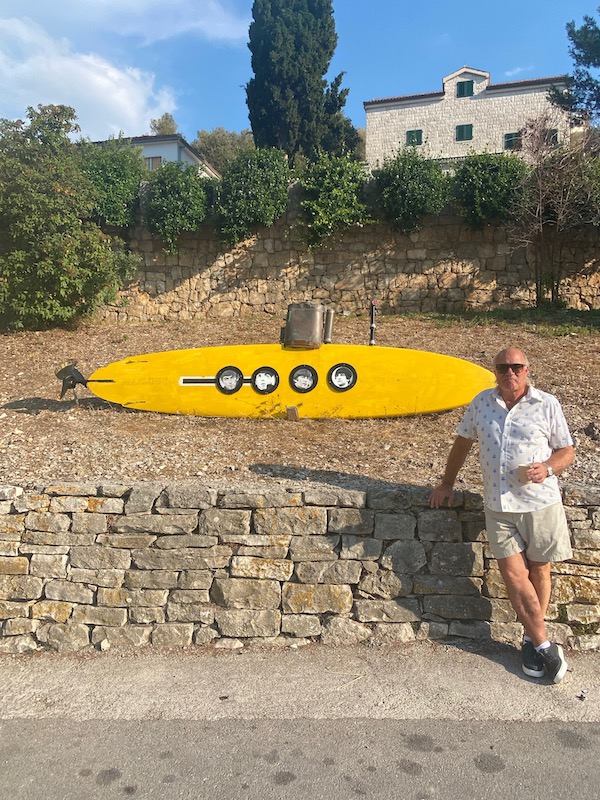
It all began in the late afternoon with Beefeater Gin on the Martinis marina, where white-clad waitresses walked from one end of the marina to the other, serving guests and yacht owners a selection of Tom Collins, Negroni and Blue Lagoon cocktails. This made for the perfect pre-party, as we strolled around the town to escape the sizzling sun.


Just before sunset, we made our way back over to the marina for the official opening, where Martinis director Ivan Kuret greeted guests and shared why it was so crucial for them to hold the event this year.
Guests gathered at small cocktail tables, each adorned with a chilled bottle of Dom Kalebic posip and hors d'oeuvres.
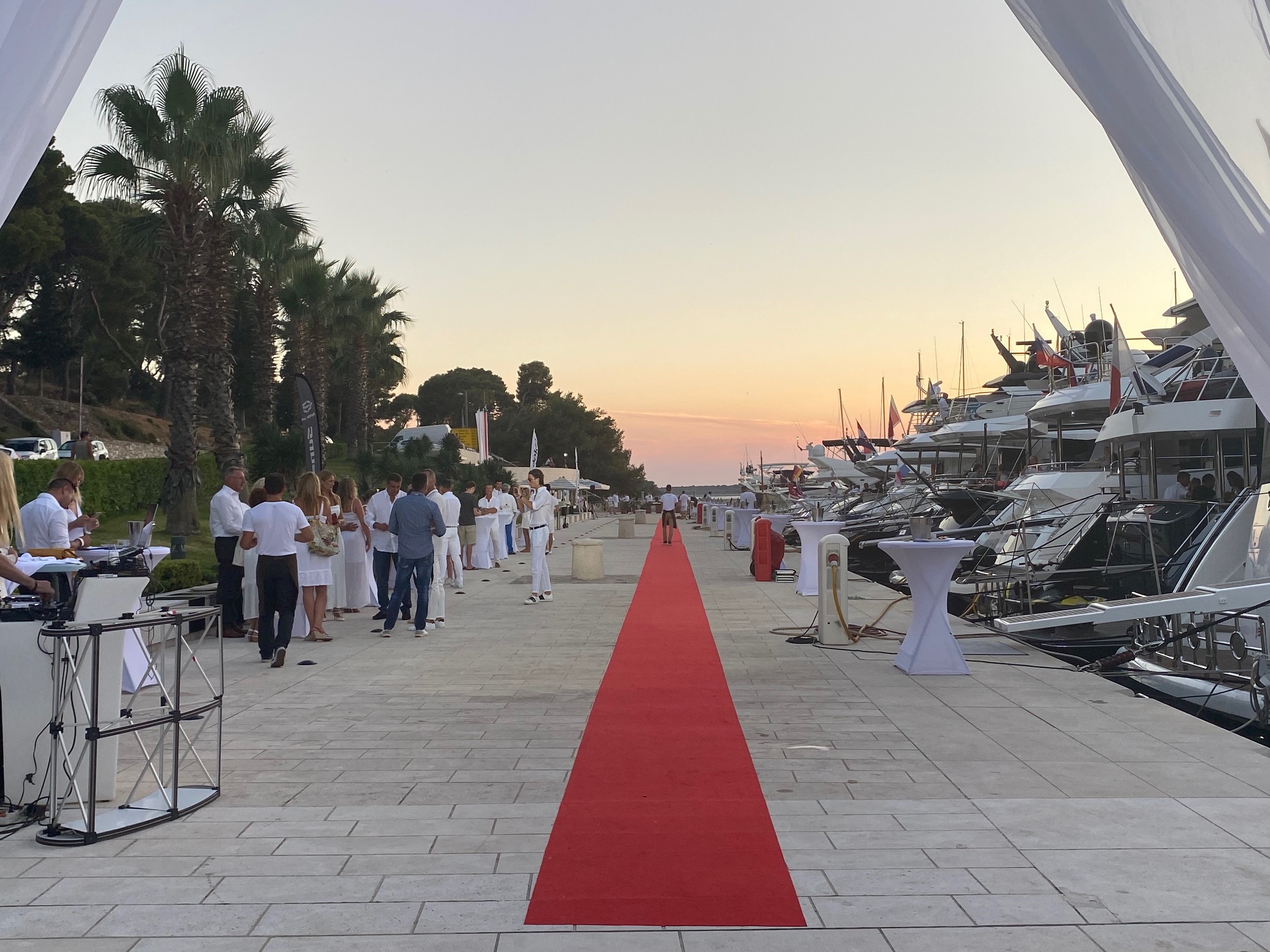


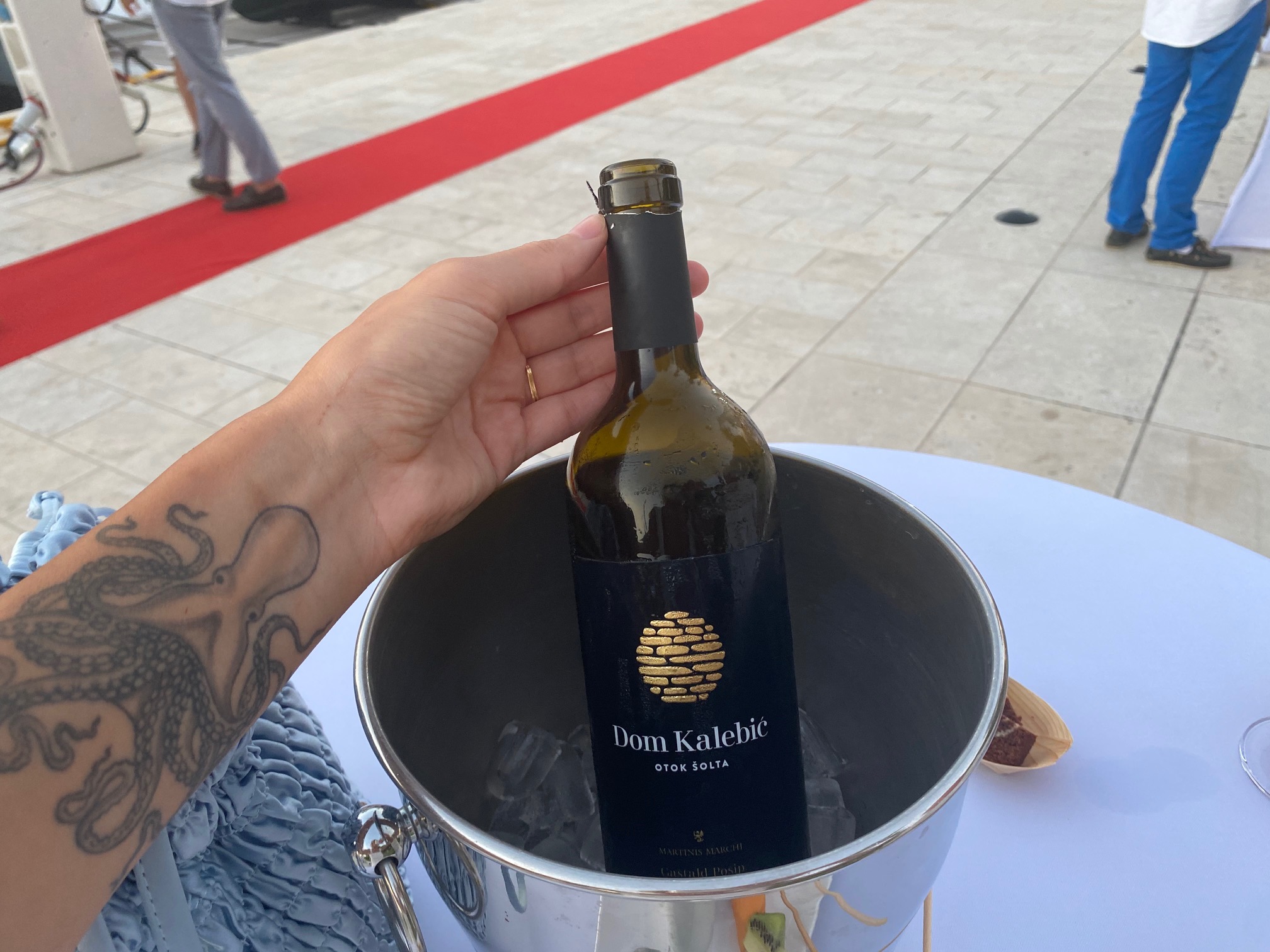
The opening speech was followed by a live saxophone performance, which set the mood for the night.
The evening continued with a striking acrobatic ballet performance by local dancers, which captivated the crowd for almost ten minutes.
But then, the crown of the opening of the opening party - the Arileo Studio fashion show.
Arileo is composed of Marija and Jurica Piric, a fashion duo and married couple. Creating together since 2003, the pair has worked in the famous fashion houses Armani and Nitya, while Marija also worked for Emporio Armani. The stunning summer collection seized the eyes of everyone in the audience... my father included.

From the marina to the Martinis restaurant terrace, we were greeted with a cold glass of Mumm champagne.

We were then escorted into the garden, which was decorated in white, with all tables socially distanced according to corona measures.
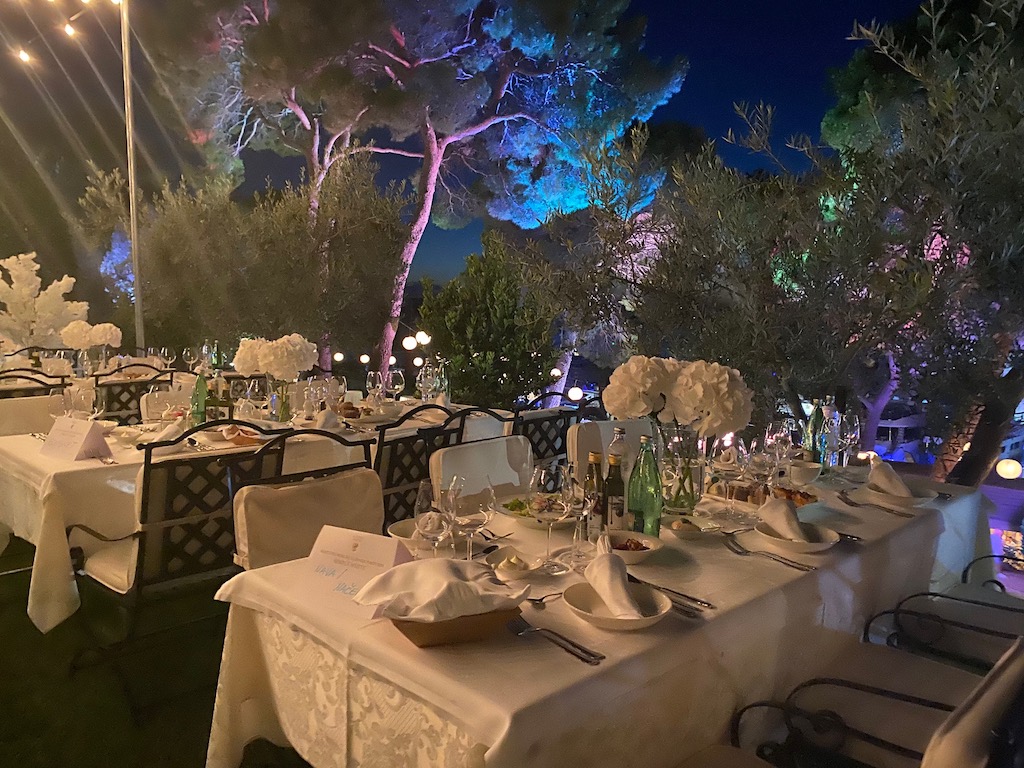
Unlike in previous years, when the upper garden terrace was adorned with an all-you-can-eat buffet table, this year, each table was served individually by a careful waiter. We began with skuta cheese, sun-dried tomatoes, whipped butter, focaccia, seafood pate, and salad. This was followed by soup made of crab and ravioli filled with duck and truffles.

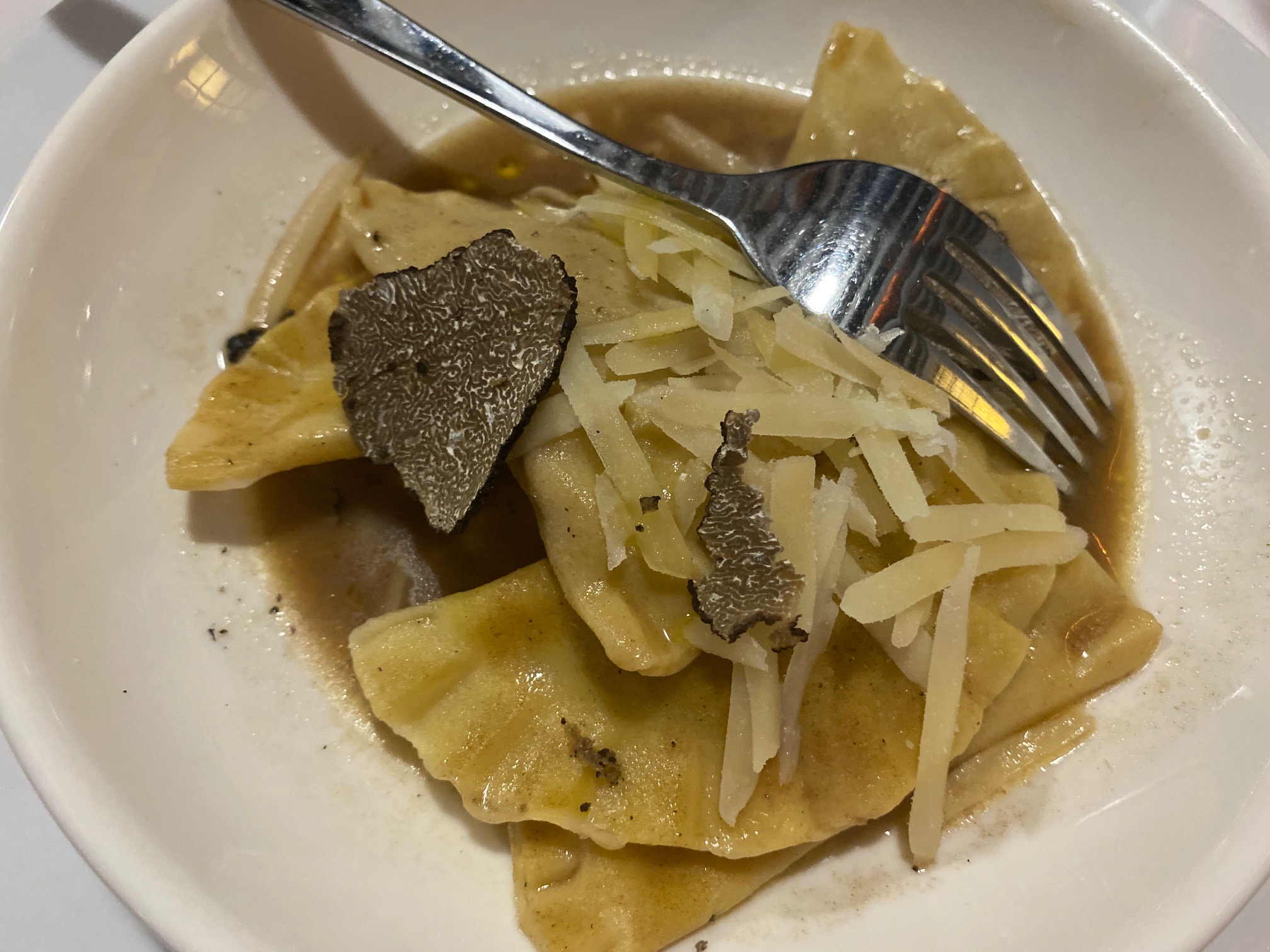
And this absolutely divine tuna.

Dinner did not go without entertainment, as the acrobatic dancers returned for a performance under the stars.
As guests made their way through more food, wine, and conversation, the night came to an end with a grand performance of Croatian tenors. The voices enhanced the already magical atmosphere and brought goosebumps to warm summer skin. As if we were in heaven.
A speedboat back to Split on the calm sea, glistening under a glowing full moon, was the pinnacle of the perfect evening.

A lit up Split Riva welcomed us home.

A big round of applause to Ivan Kuret, Marija Gamulin, and the entire Martinis Marchi team for succeeding in creating a truly unequaled spectacle in these trying times. To say you've outdone yourselves would be an understatement.
Just imagine what next year will bring!
For anyone interested in learning more about Martinis Marchi, or is interested in joining the party next year, you can visit the official website here.
To read more about lifestyle in Croatia, follow TCN's dedicated page.
Martinis Marchi Celebrates Summer with White-Themed Bash on Solta Island
July. 29, 2020 - Martinis Marchi Heritage Hotel on the island of Solta will not let the corona stop their annual summer celebration. Instead, the biggest party of the year will adhere to the 'new normal'.
While it's challenging to maintain events in the corona era, some persevere - and Martinis Marchi Heritage Hotel, in the town of Maslinica on the island of Solta, is one of the survivors.
Rather than concede defeat and say goodbye to their traditional summer ball, they instead decided to take a dance with the new corona measures to ensure this favorite summer event would be held, albeit under slightly different terms.

Martinis Marchi, the historic castle turned extravagant accommodation, pulls out all the stops for their biggest night of the year - their annual summer soiree. Flaunting a different theme each year, this summer, guests will enjoy a celebratory weekend under the theme 'Simply White'.
"The event, we hope, will delight you as every year while we will closely follow and apply all instructions from the Croatian Institute of Public Health to keep our guests and staff secured.
Today, maybe more than ever, we are aware that those “little” things in life matter the most, and what can be more rewarding than having the opportunity to spend a weekend in a private event, feeling safe while enjoying in culinary delicacy, fashion, art, good music and entertainment in the very special venue on Adriatic?" writes Martinis Marchi in their event announcement.
It all begins on Friday, July 31, at the open seaside Restaurant, with an evening of Champagne & Sea Delicacies. The exclusive champagne evening continues with a five-course dining extravaganza, followed by the carefully selected wines from Galic winery.
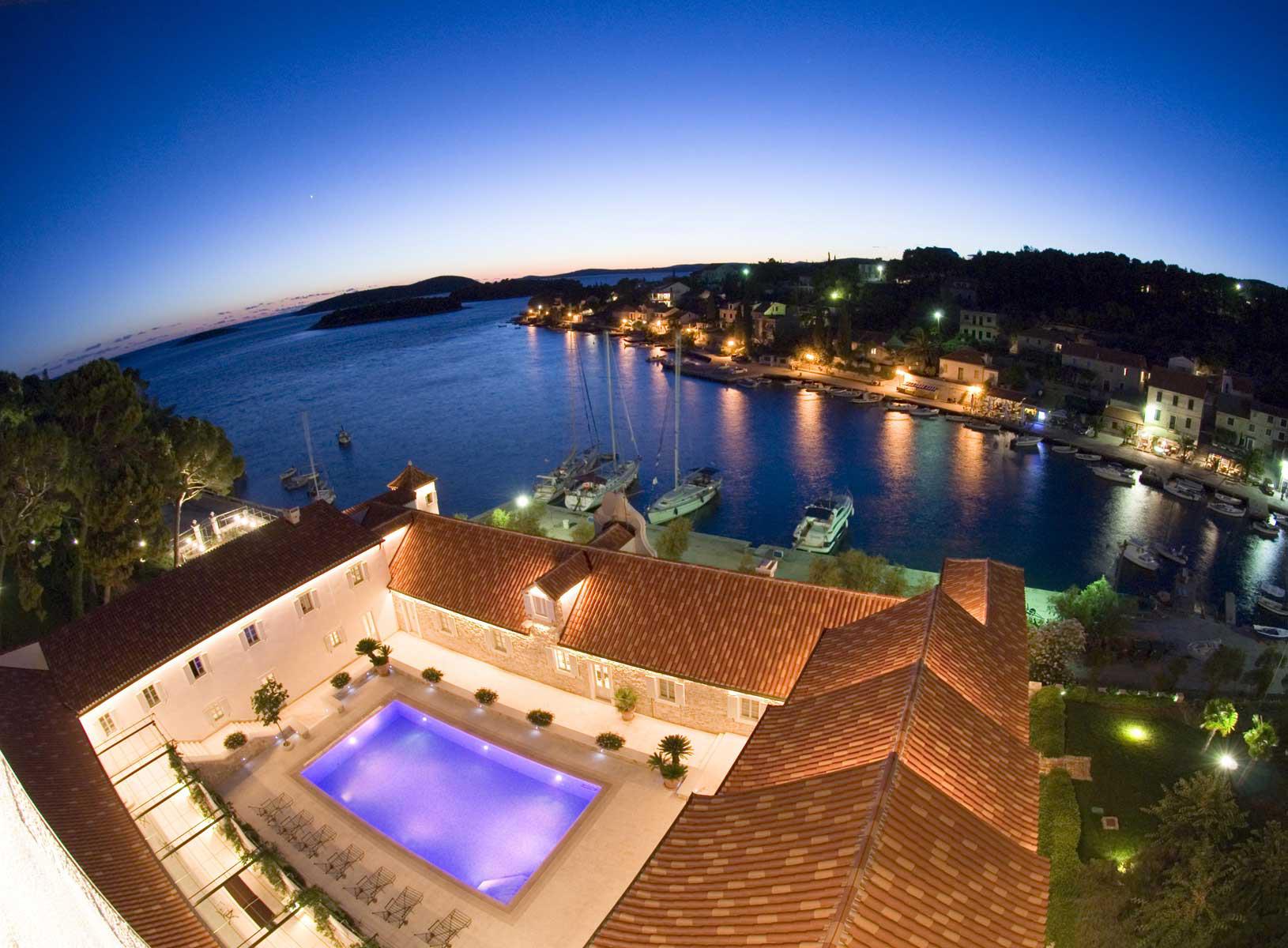
But that's just the warm-up.
Although already sold out due to strictly limited capacity, the 'Simply White' party of the year begins on Saturday, August 1. From the afternoon, guests can delight in cocktails and a DJ in the marina while enjoying surprises on the red carpet.
A special Sundown Fashion show by famous Croatian designer ARILEO follows, which officially opens the Martinis Marchi Summer Party 2020.
Guests will then move to the Martinis Marchi restaurant terrace for Mumm Champagne and a delightful dinner in the Mediterranean garden, accompanied by exclusively selected Dom Kalebic wines from the island.
The dinner atmosphere will be enhanced by a DJ accompanied by live sax performance, though the highlight of the evening is an intimate live concert performance of the most famous Croatian tenors.
Martinis Marchi has teamed up with Sunseeker International, Jamnica, Galic Wines, Dom Kalebic winery, and more to ensure guests are greeted with extravagance throughout this celebratory weekend.
For those lucky enough to attend, it'll be the party of 2020.
You can read more about Martinis Marchi here.
To read more about lifestyle in Croatia, follow TCN's dedicated page.


